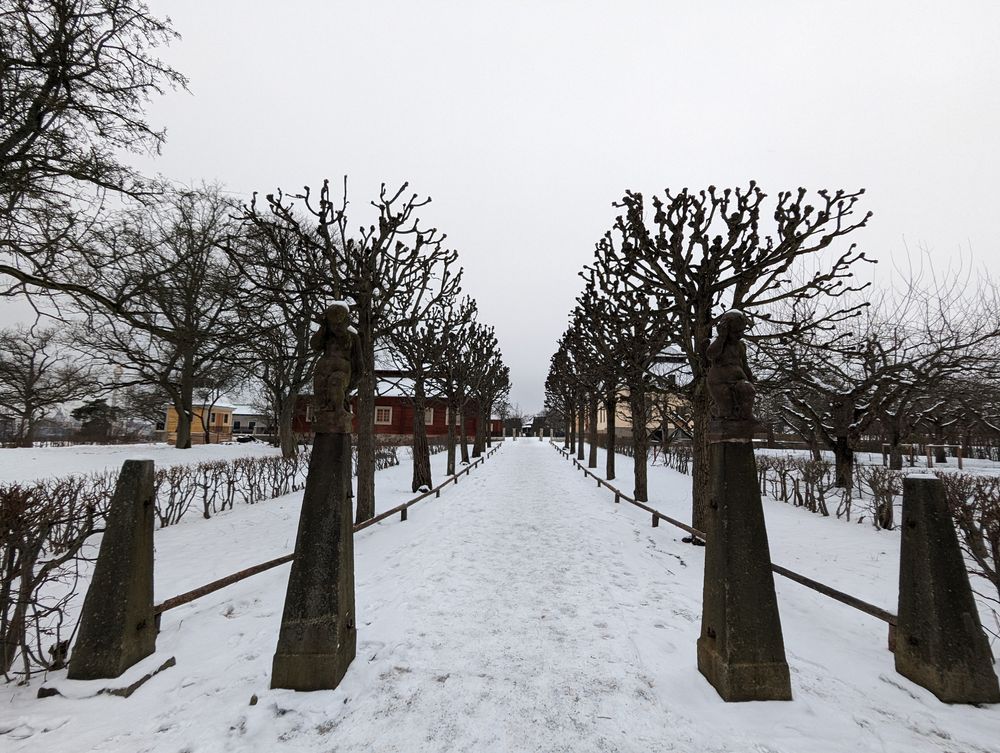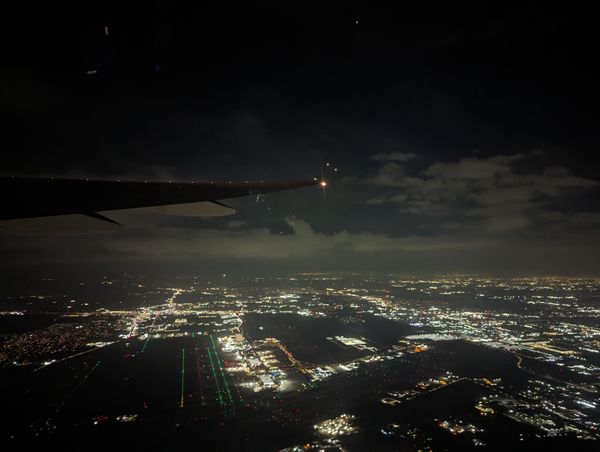Stacy: Day 2 - Hej!
"Hej!" Means "Hello" in swedish. (Pronounced very much like the English "hey," in "hey, what are you doing?")
I feel awkward saying hello to strangers in such an informal manner. Lol.
So, Nando tells me that about 80% of Sweden speaks English. Nando and I have determined that when someone says "Hej" to us, we smile and say, "Hello," back. Most of the time they respond with, "Oh. Hello!" And, we continue to converse in English. We are very blessed to be Americans! (For far too many reasons.)
Swedish, to me, is basically the baby of German and olde English. While I can understand a decent amount of it (for a noob) when spoken, I can't pronounce it to save my life.
Last night, I got 3 sets of 2-hour sleeps in before I gave up. I felt rested, but just couldn't stay asleep. Nando was out like a log for about 12 hours.
That said, today started off leisurely. We didn't have a set time to be anywhere special--just had to be down to breakfast before it closed, and the open air museum didn't open until 10am.
It was our first time taking Swedish public transportation, and it's so easy! (But, I'm glad I was not alone). They use card for everything (for any and all purchases), and usually state "no cash."
For the buses and subway, you can literally take your tap-to-pay credit card at the bus entrance, or subway gates, and that's that! For the tram, you get in, and then swarm the conductor, but basically do the same thing with tapping-to-pay. A handful of credit cards are approved/useable in their country.
Google is amazing at figuring out public transportation for you! In both Japan, and now in Sweden, it has gotten us to the places, showing each step (stop, transfers) we need to make.
This is the only day we could visit this location because it's the only thing Nando wanted to do here (tomorrow's guided tour was full on Sunday, so we'll do it on Monday). And, today is literally the coldest day of our visit (during their coldest month of the year)! 😂
After about 30 minutes travel, we made it to Skansen, the open air museum. It is an amazing interactive experience of the Swedish culture! Great for kids, too.
Each historical building was carefully disassembled (from all over Sweden), and reassembled in the park. The park was created in the late 1800s by a gentleman who feared that the Swedish culture was disappearing too quickly because people were swarming to the cities for new work, as well as Sweden being influenced by their neighbors more (in politics, ways of thinking, technologies, etc). For example, they were deciding whether or not to get rid of their monarchy. I believed they tried, but failed. Don't quote me on that. But, I know they currently still have a monarchy because I'll be touring the royal palace and apartments on Tuesday. I digress.
Back then, Sweden had been approximately 100 years behind the rest of Europe in terms of technology, housing styles, farming and living practices, etc. It's very evident in these buildings.
One of the first buildings we saw looked like something from the 1500s to me (which is more than 100 years difference), but it was how they lived in the 1830s. Now, my comparison was to the rest of Europe--the buildings I know we're built in the 1500s, in Germany and England, had distinct architectural similarities to each other, and this Swedish 1830s house also had them (but with obvious Swedish flares). It was so strange. I didn't get photos inside of the house with the person because we ended up talking to her the most (and I forgot). And, inside of where it saw the just situated to the 1500s. But, these were the farming buildings inside the same complex:
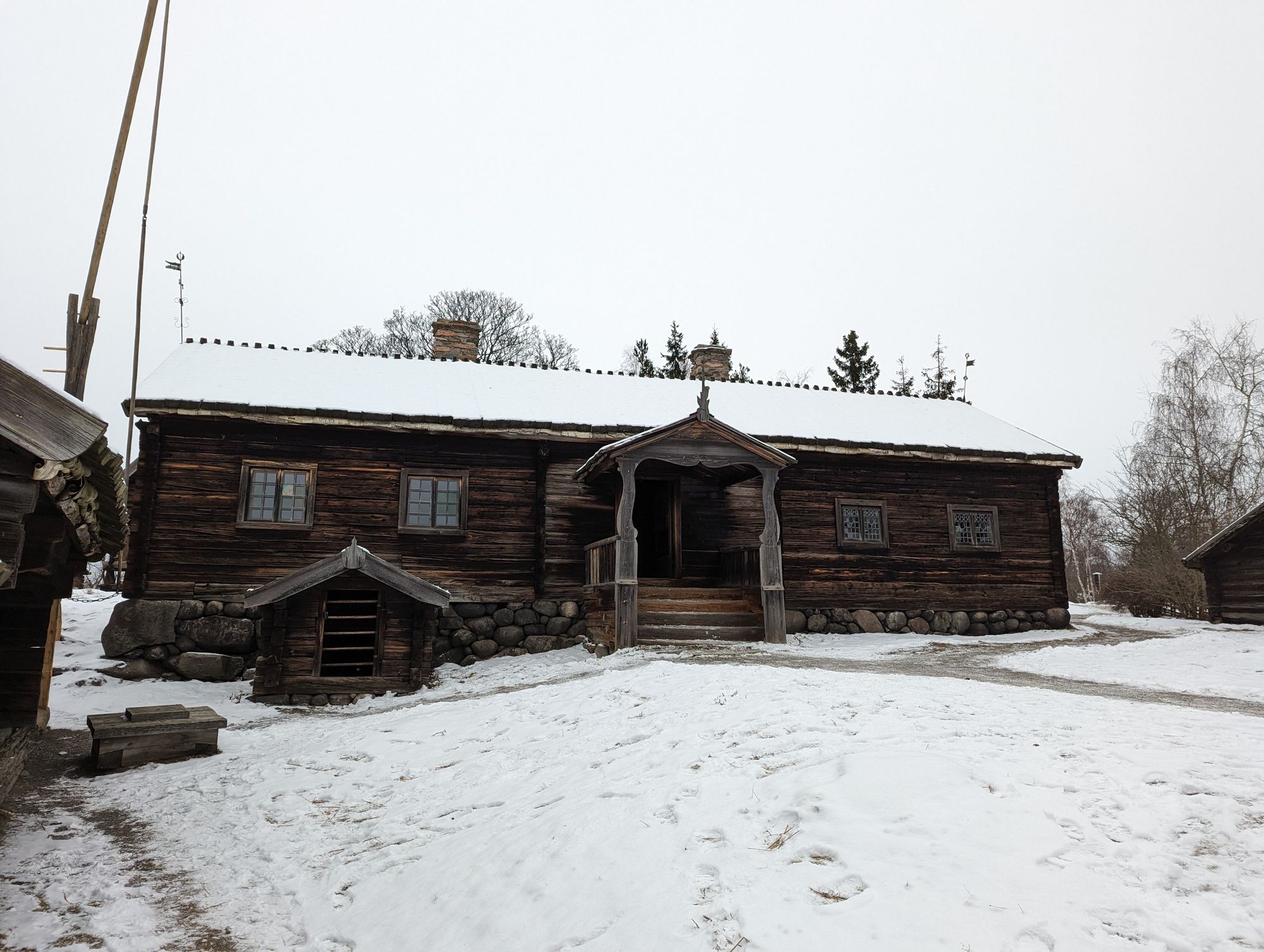
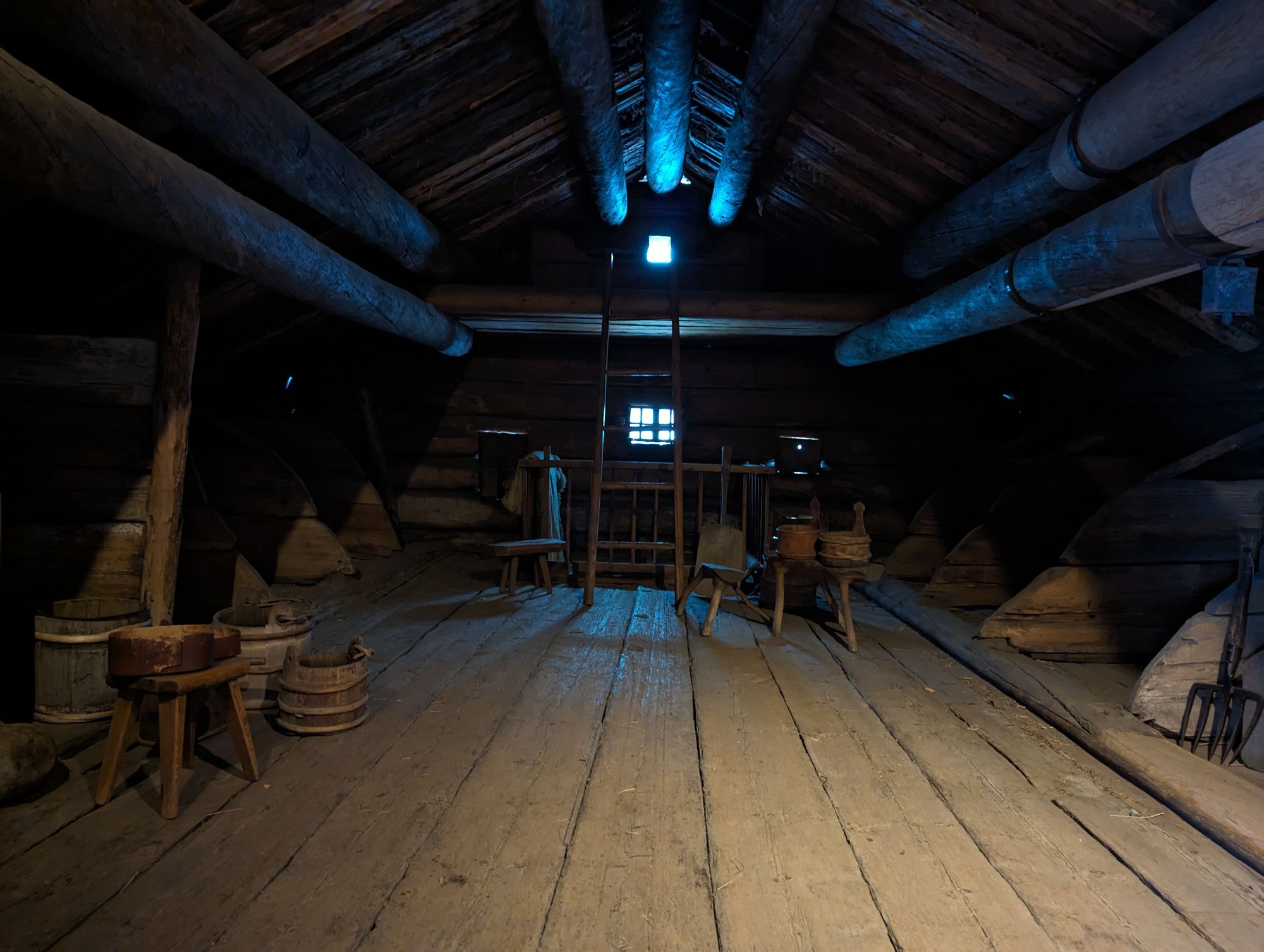
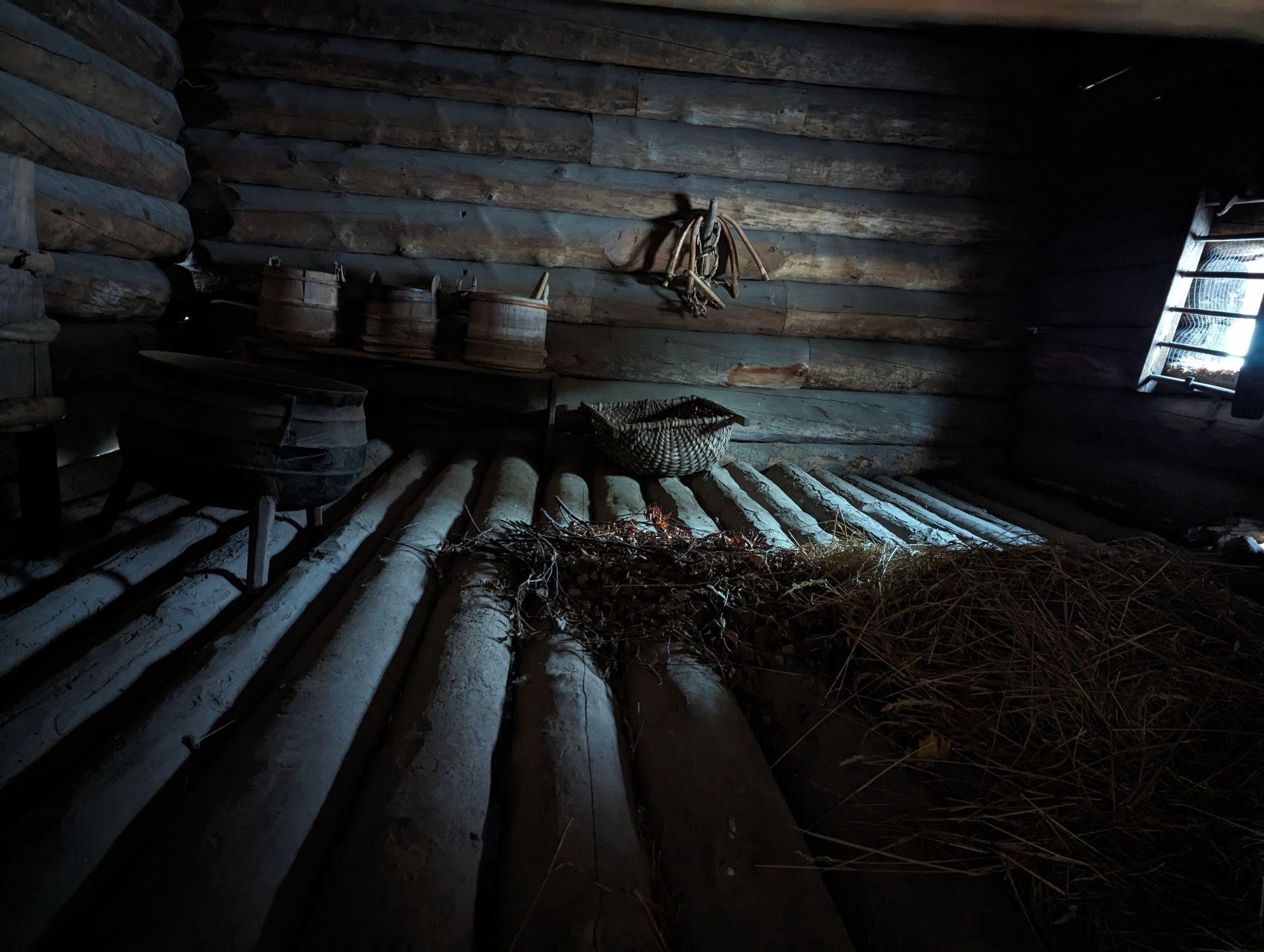
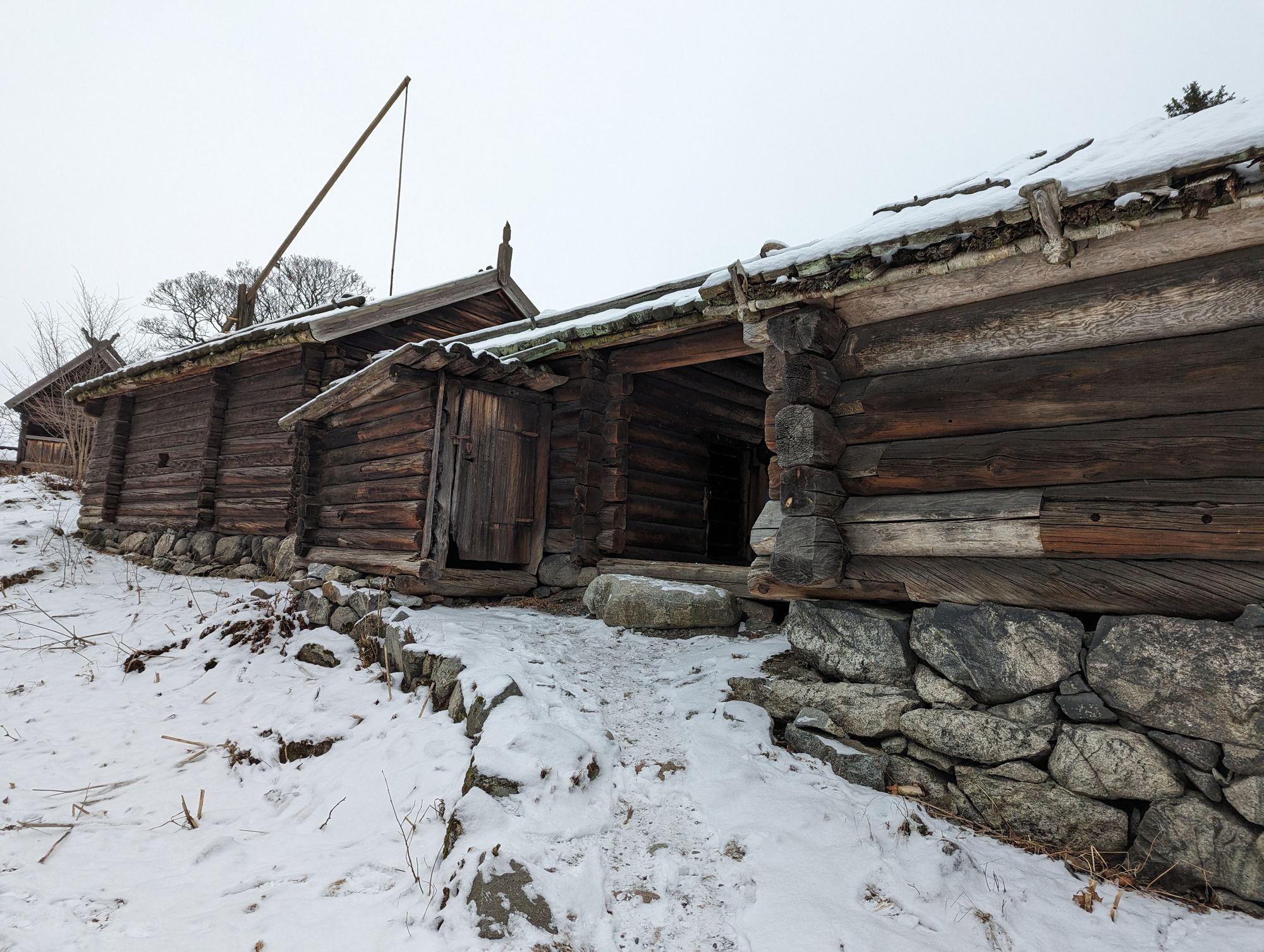
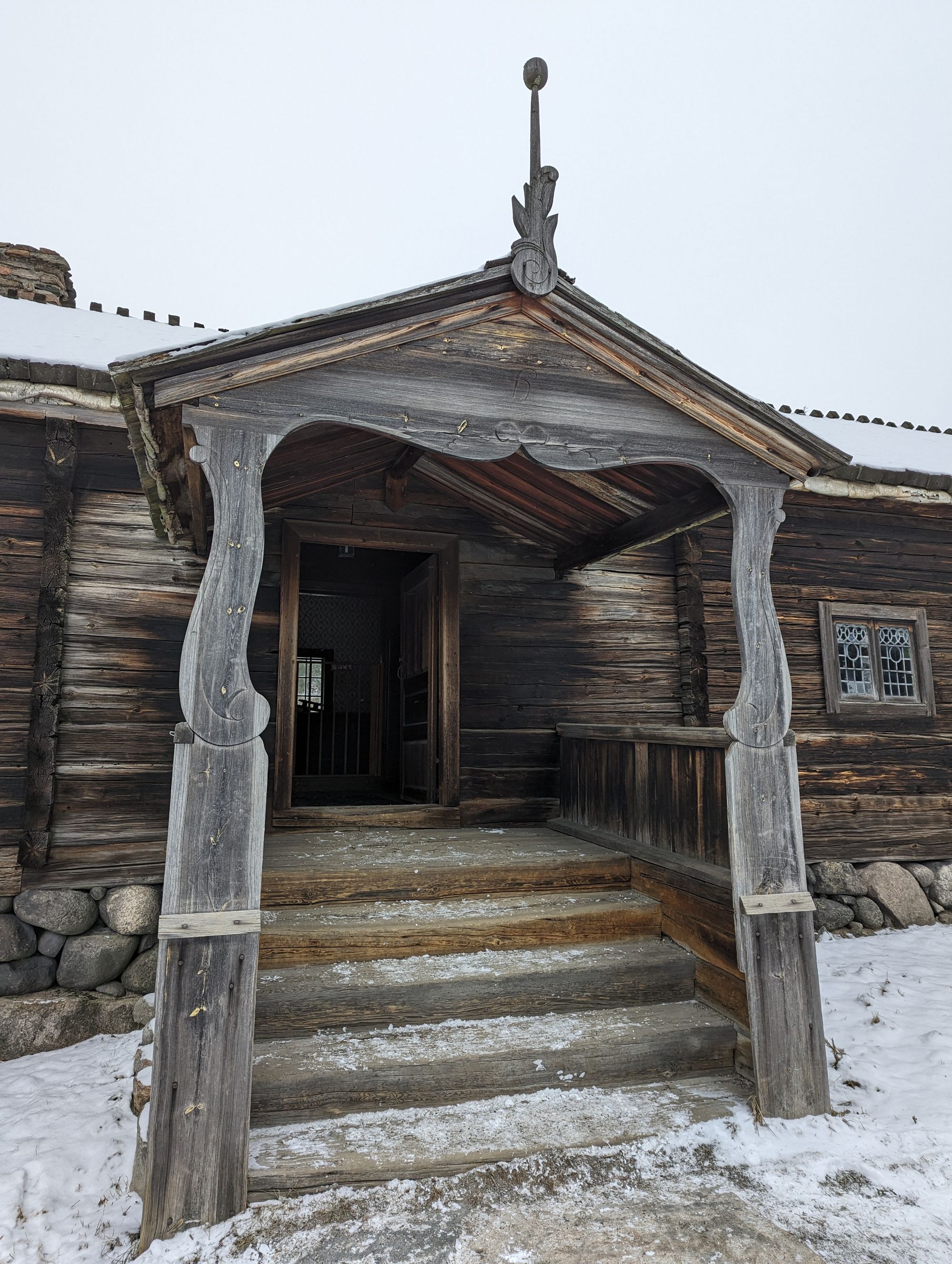
In the next batch of photos, you can see they progressed quickly. These red buildings were from cities and their close surrounding areas. They were representations of how the middle class lived. The printer's business, book binders quarters (not pictured), a spice shop (not pictured). Below, the photos of the outsides of buildings are unnamed buildings that were pretty.
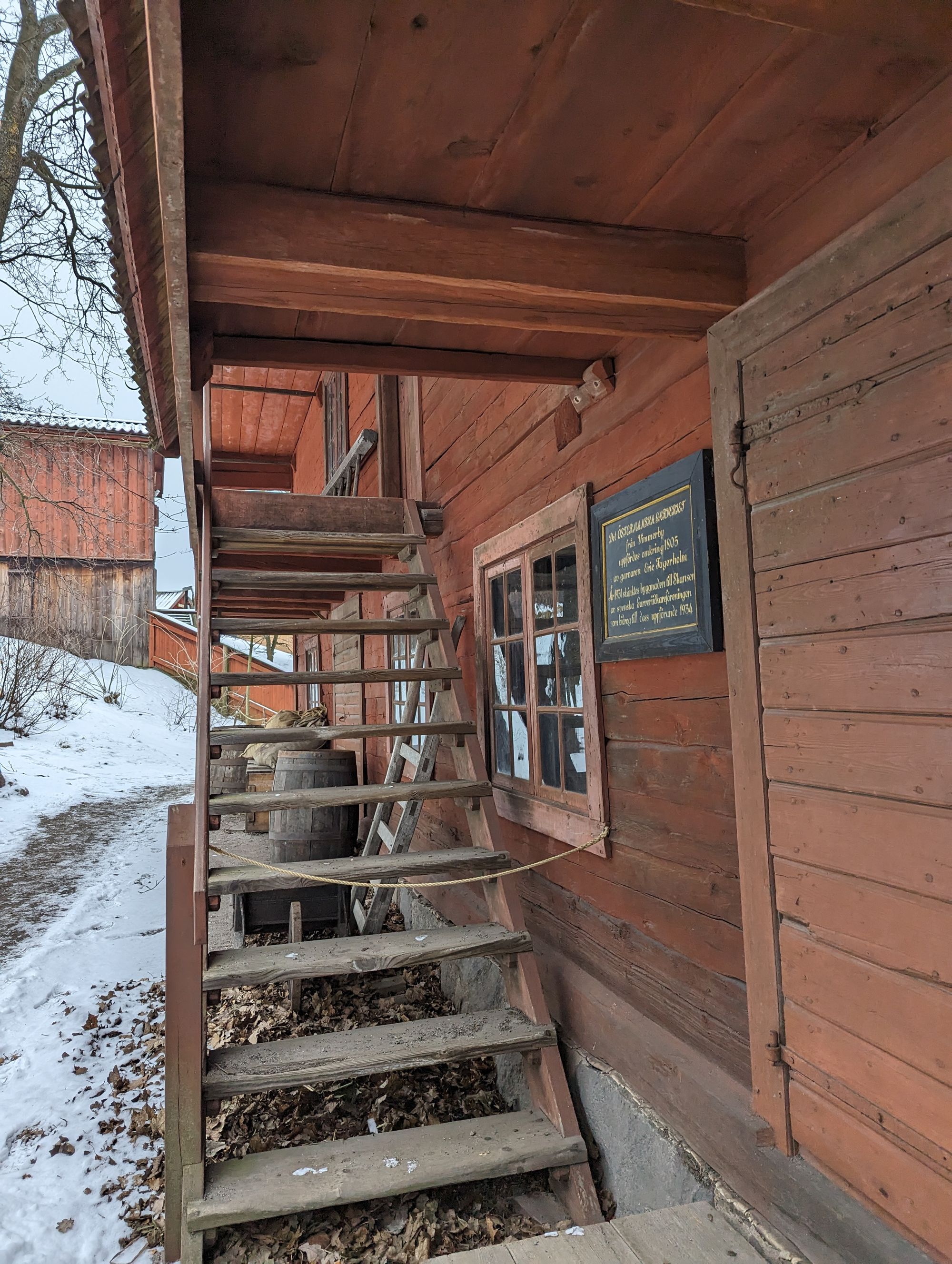
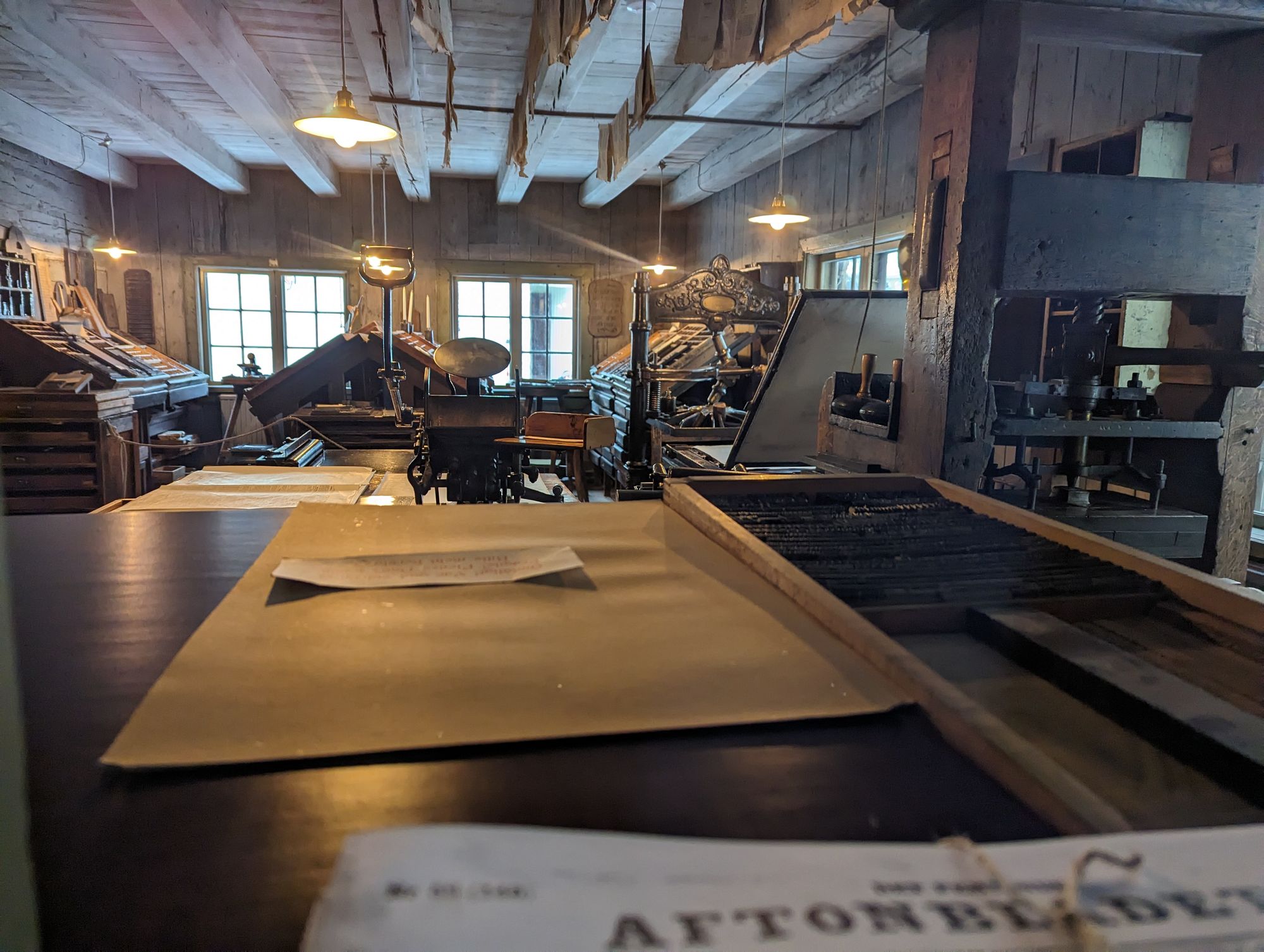
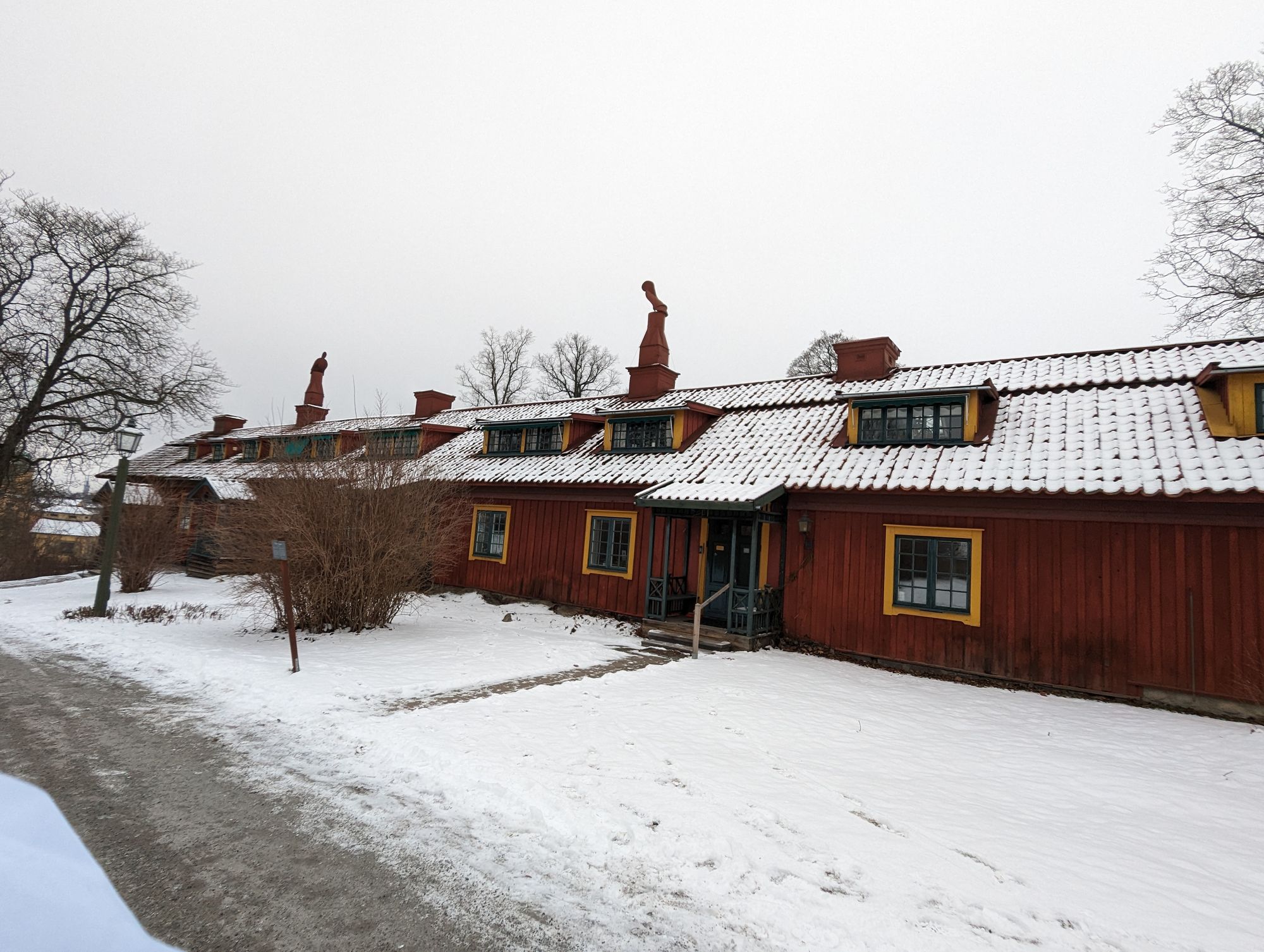
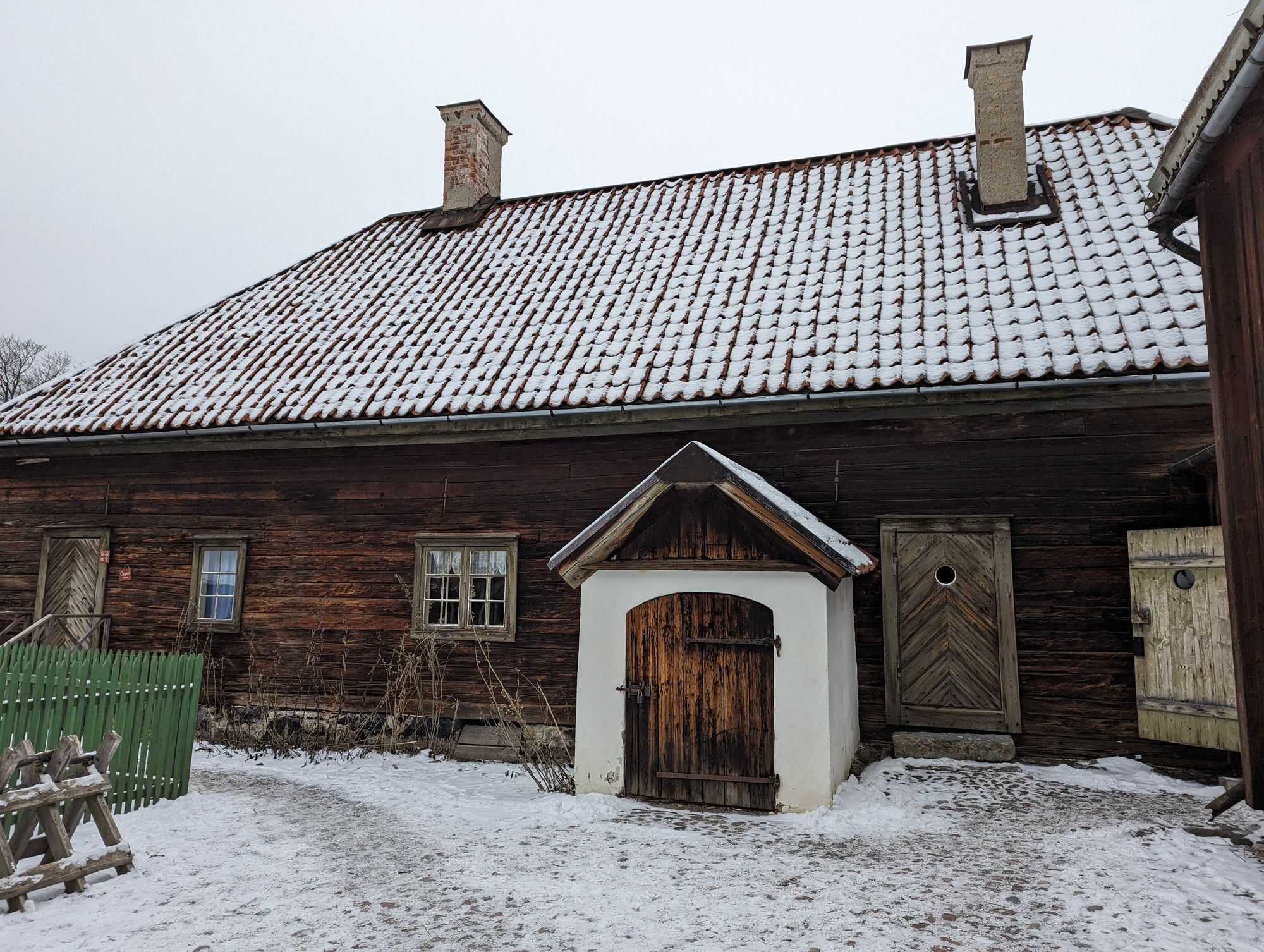
Our tour guide led us into a building that showed how a poor, yet better off family would live. Usually around 12 people would be crammed into a room that would be a dining room in a present-day apartment, or a small bedroom in a present-day house (approximately 10' x 15').
This apartment had a nicer stove for cooking and warmth, with a tiled "chimney" so the heat could radiate better throughout the space.
Sometimes, they would use beds in shifts... Either the family would rent a bed (thin mattress) on the floor, right in the middle of the room, and there would go about their daily life as someone slept. Or, if someone worked a night shift, someone else would use their bed while they worked.
The other furniture in the room considered of a take with one chair, a couple of wooden beds the size of cots (which seemed to sleep only one, but you know they crammed as many as they could in there!), and a floor to ceiling cabinet that stored the face-washing station, cooking supplies, and a small cabinet of basic cooking spices/necessities.
Our guide didn't actually show us much because she would go off on tangents. We still learned a lot, though!
One very interesting fact: apparently this red building color ("falu red") is traditionally Swedish. But, it did not become a popular Swedish thing until the 1600s. In the early 1800s, due to "Westernization," officials began banning the use of this traditional red.
But, the more interesting thing (to me) is what this red comes from: copper mines. "But, Stacy," you say, "copper oxidizes to green/blue! These buildings are quite red."
So, Sweden used to export a lot of copper, but at some point copper fell out of favor, and wasn't making much money, anymore. Then, they discovered that some other byproducts or minerals found in the mines (that's where I'm sightly uncertain of facts) could be used to make paint, and that paint was amazing at protecting wood from the elements. The iron in the mines (perhaps specifically the bacteria that creates rust) preserves the wood from the water and ice.
After the tour, we meandered around the park. I had only a few must-see items on my list.
Photos of a few random things we found: the teepee was a modern warming station, with a wood burning stove inside. Imagine our surprise seeing that set up in this place, though! We began quoting "Cannibal: the Musical." 😂
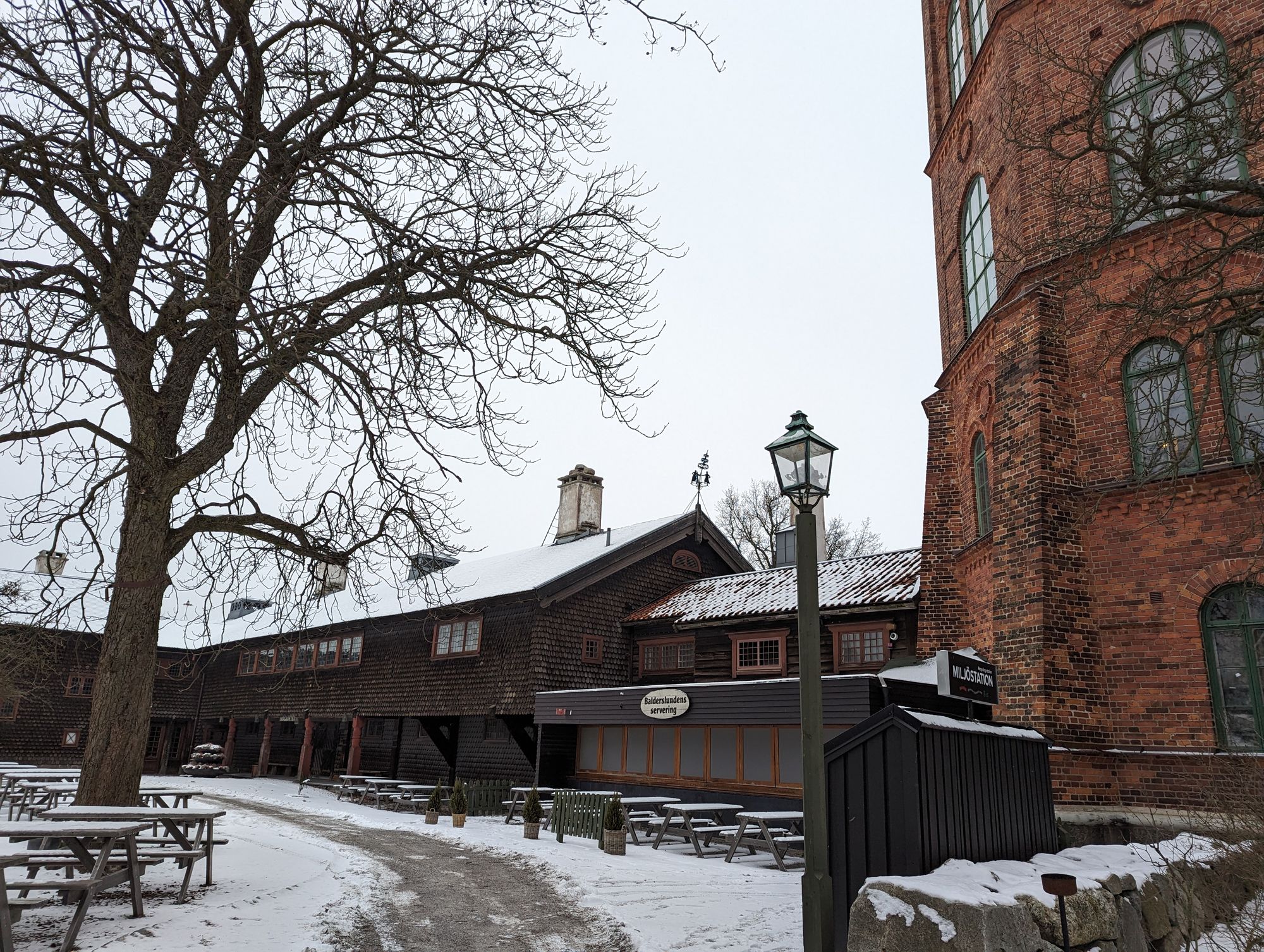
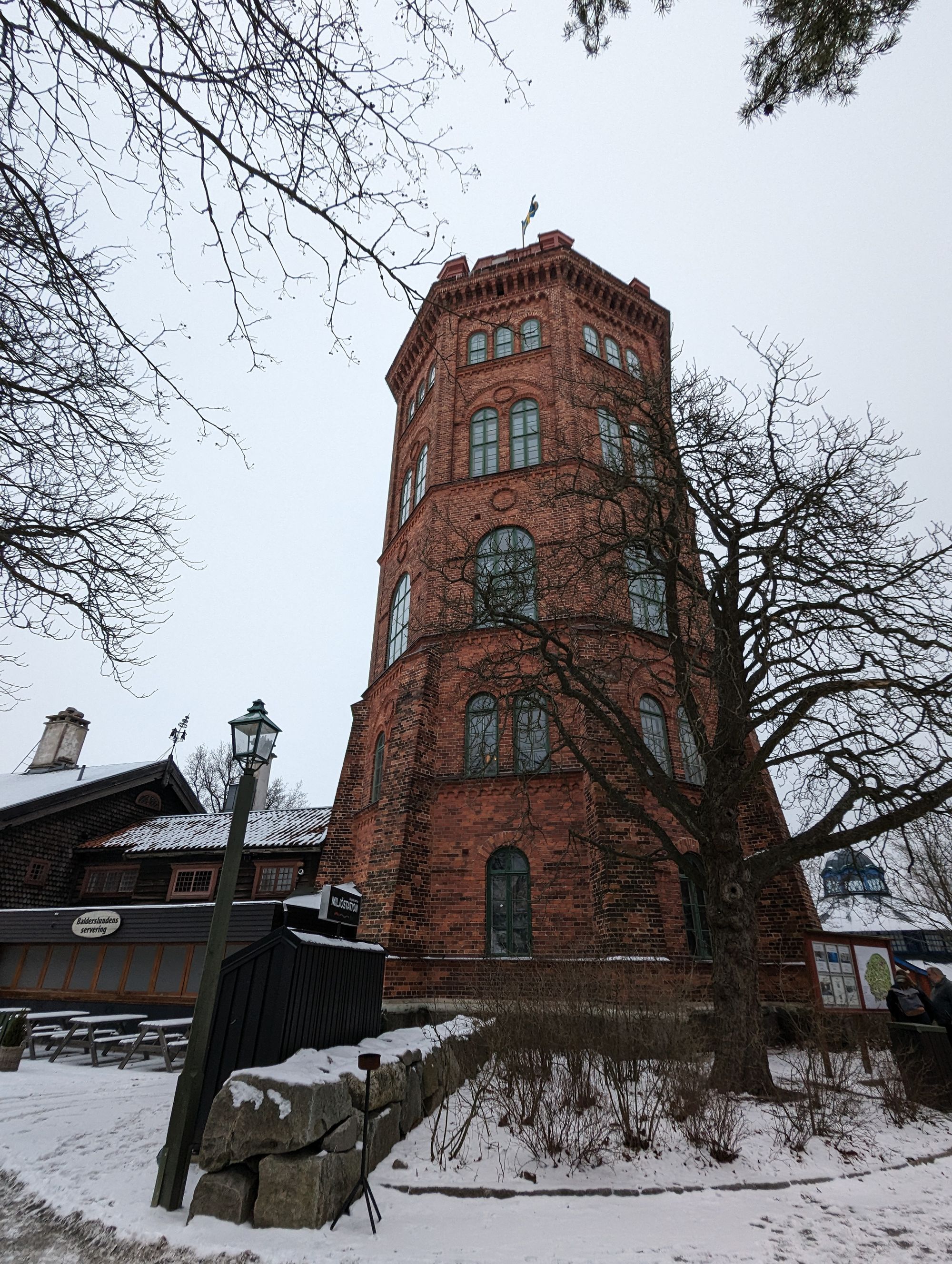
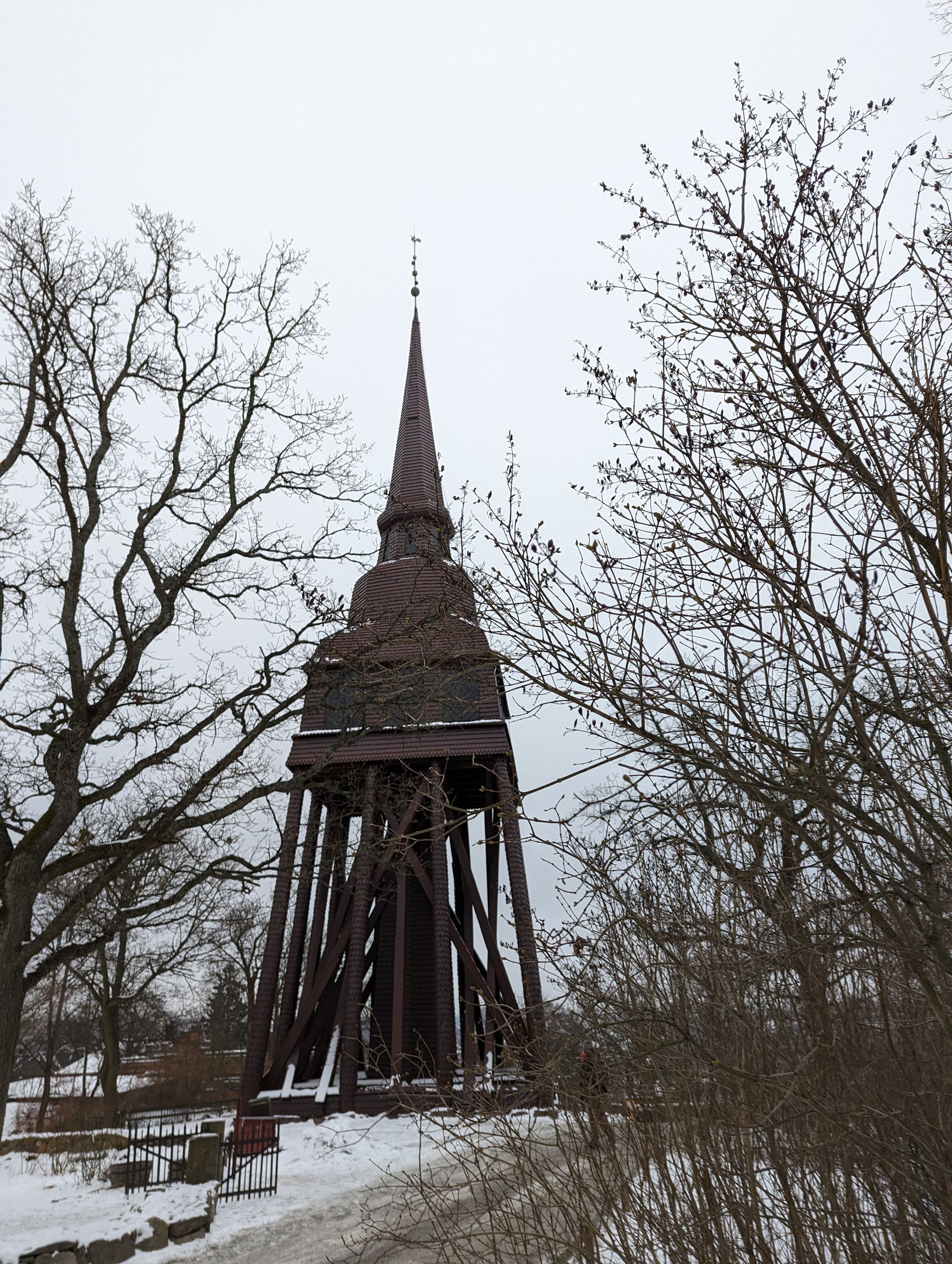
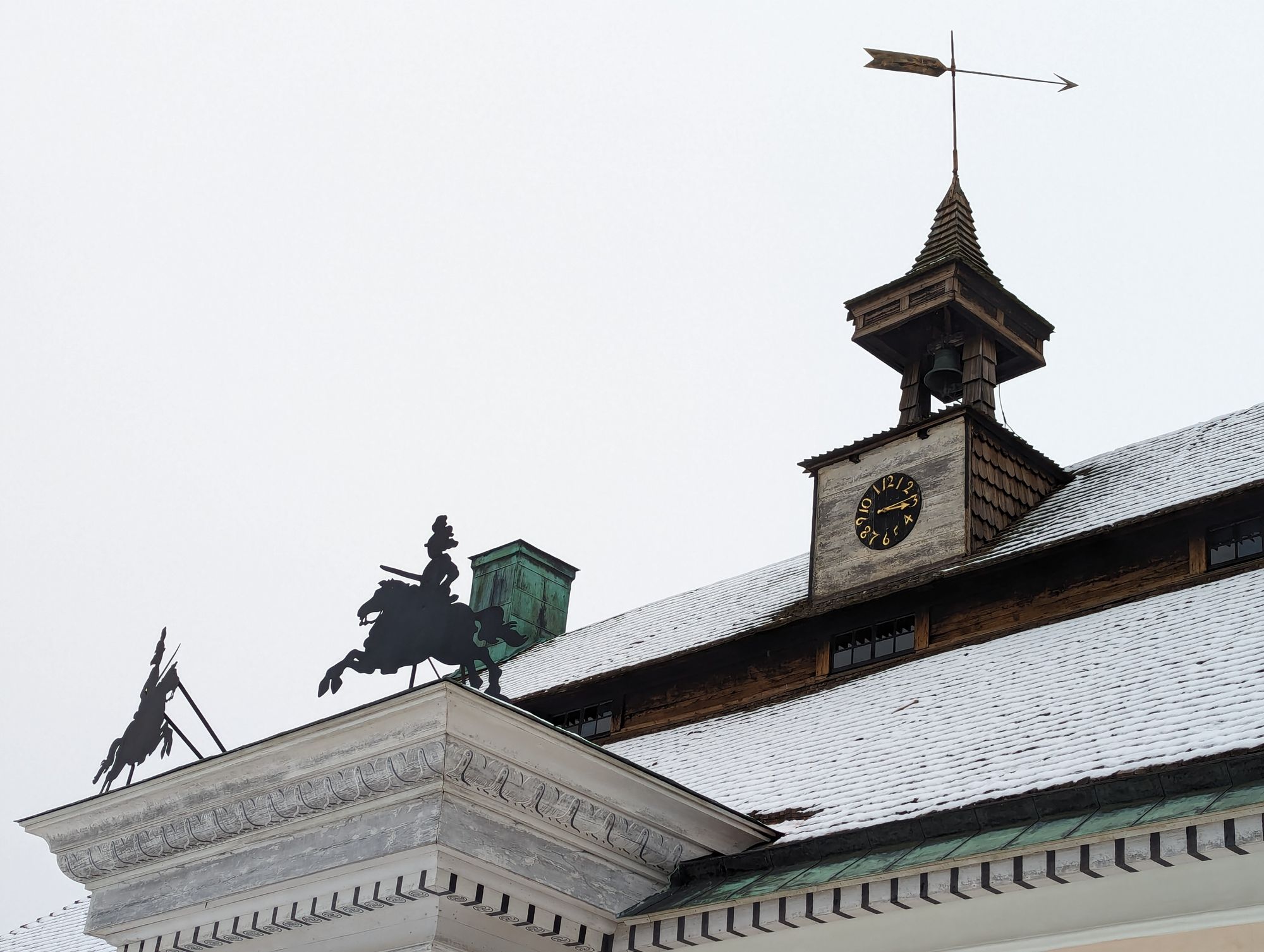
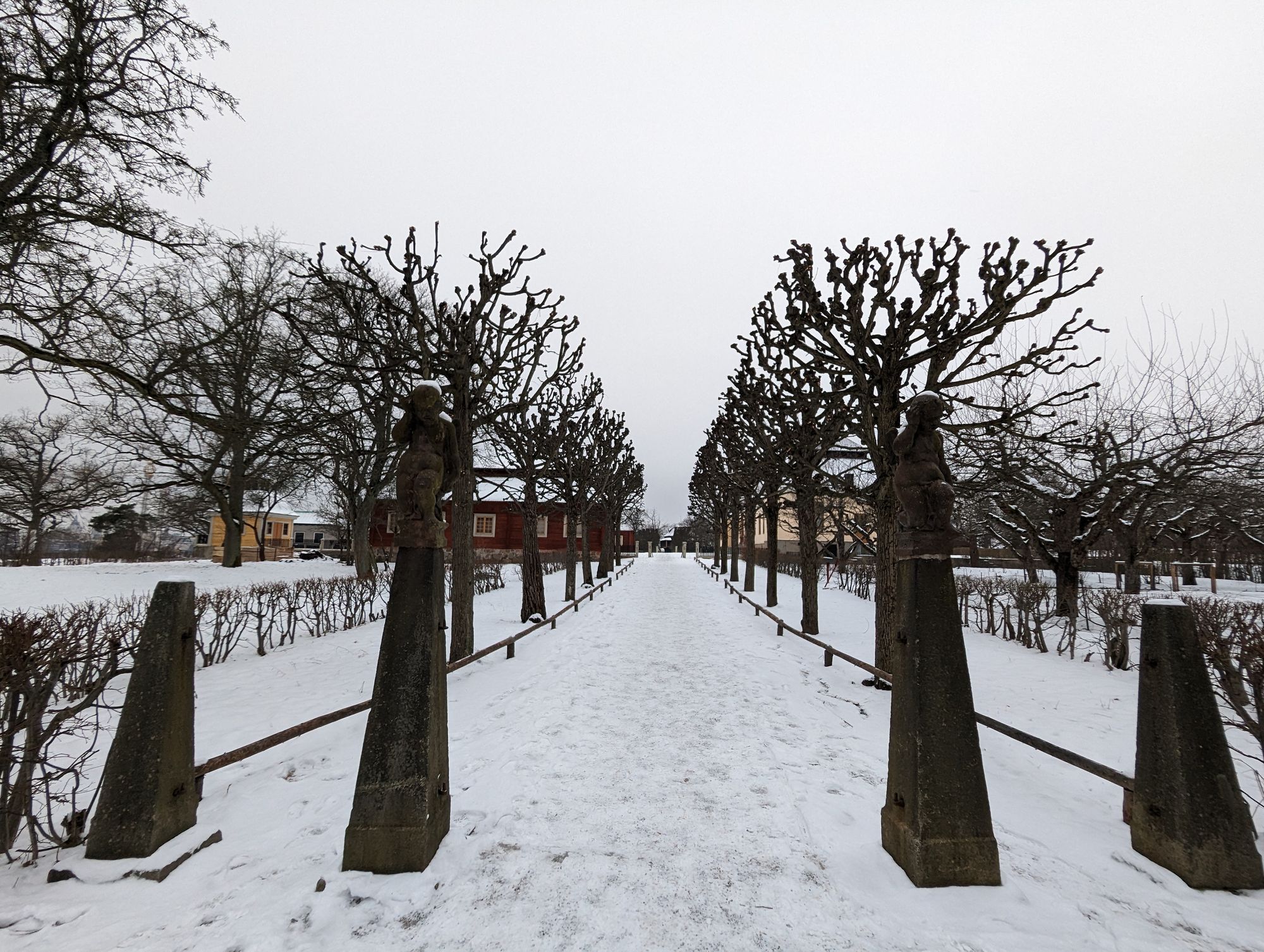
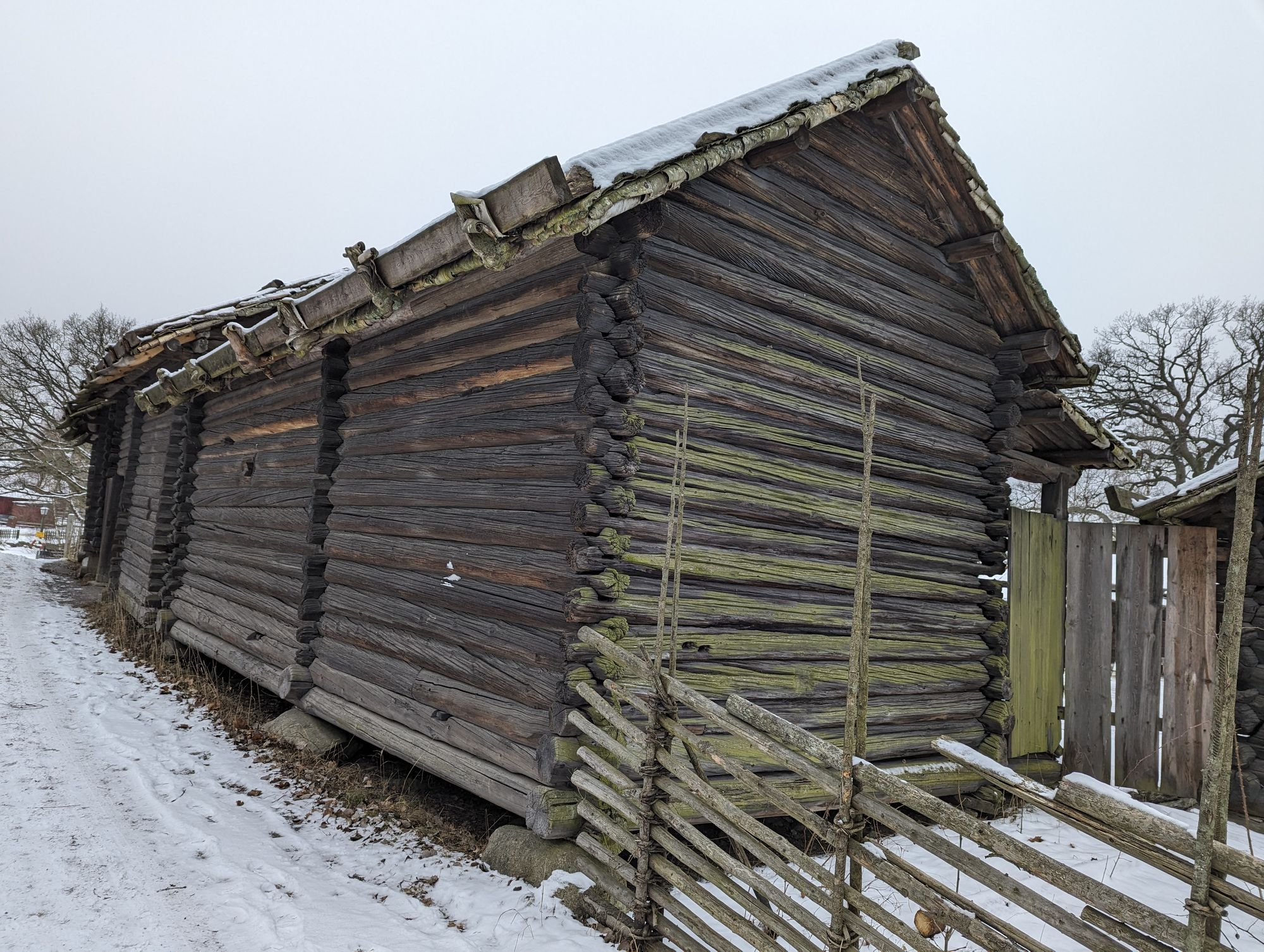
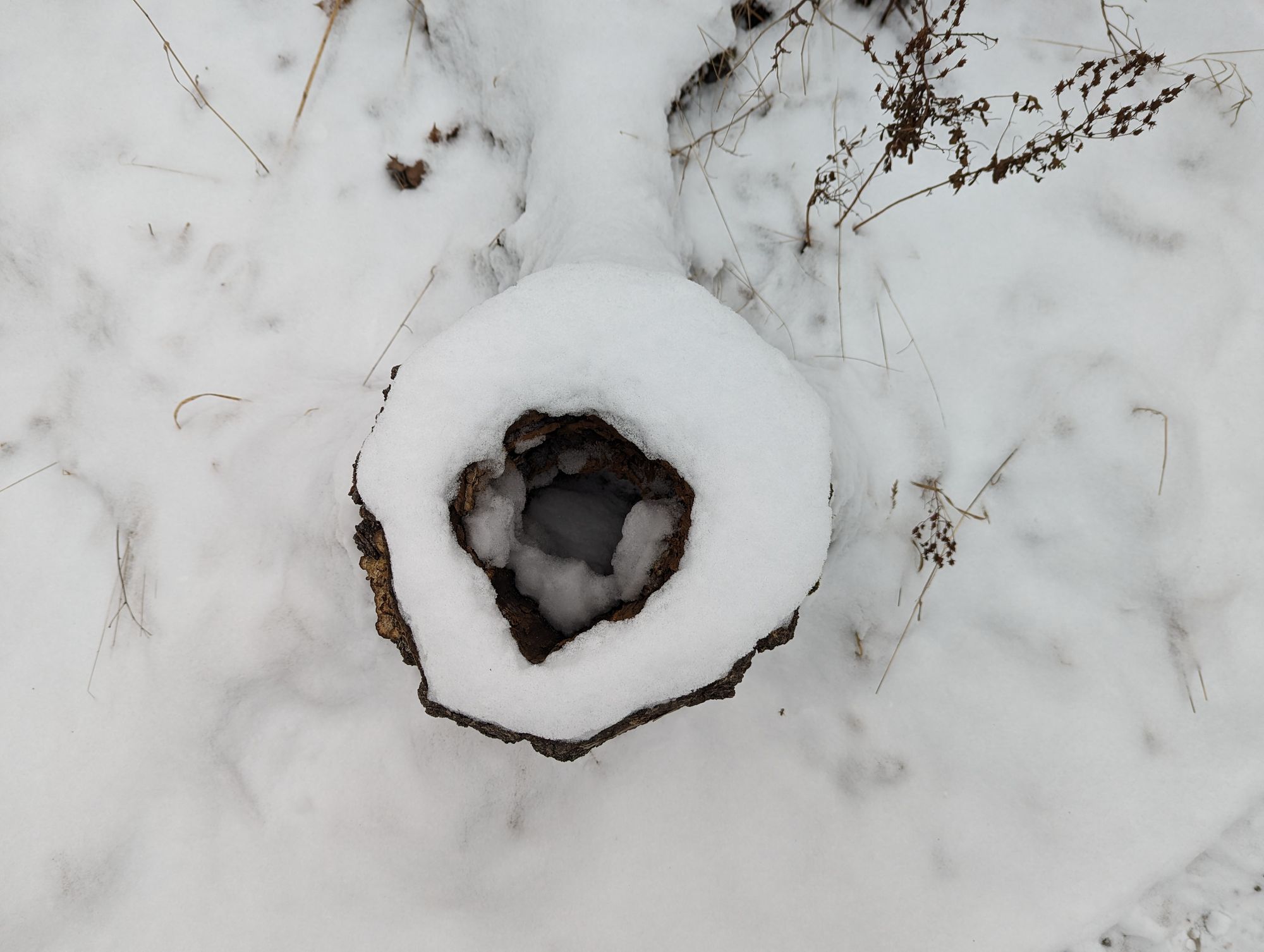
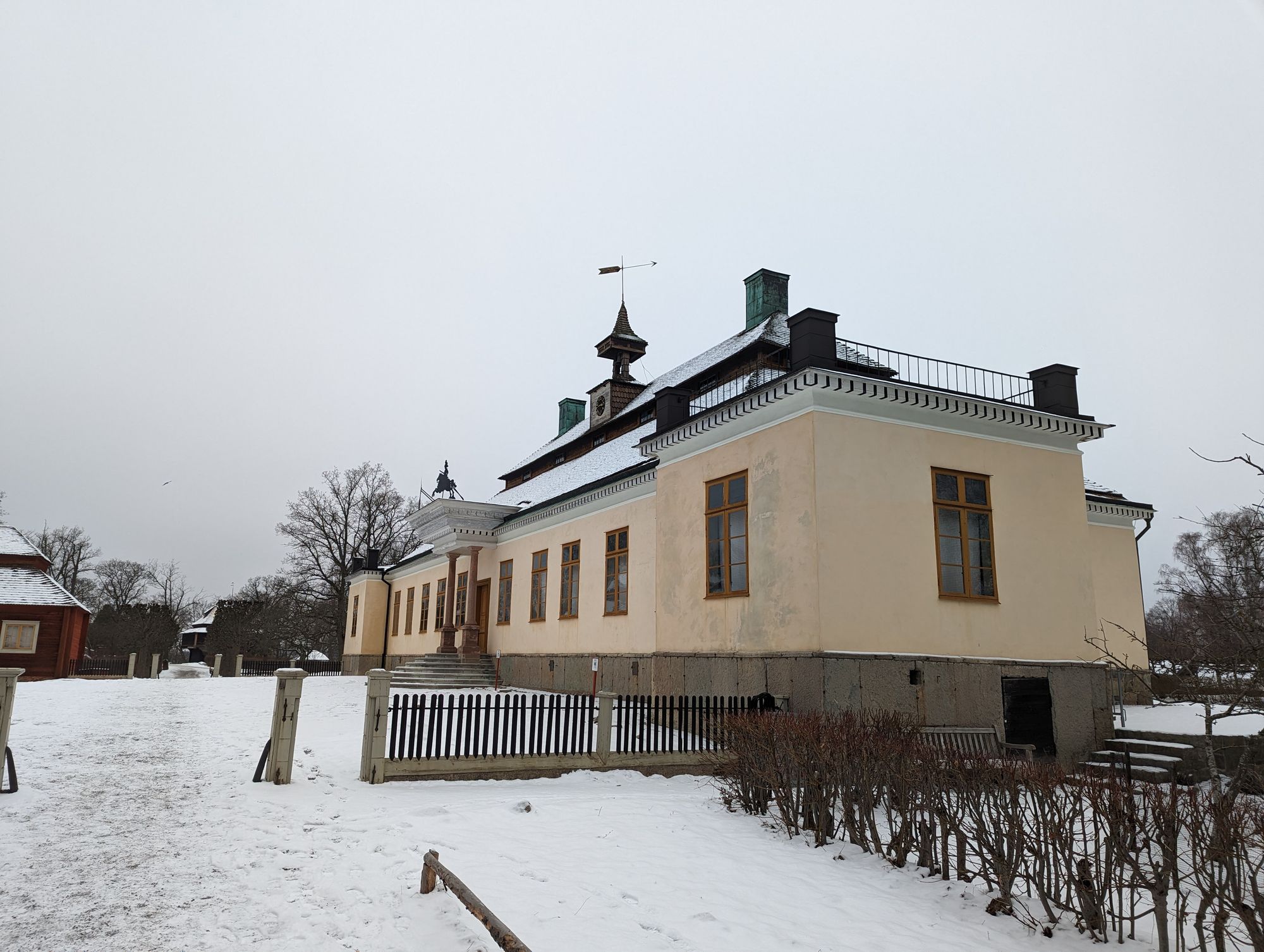
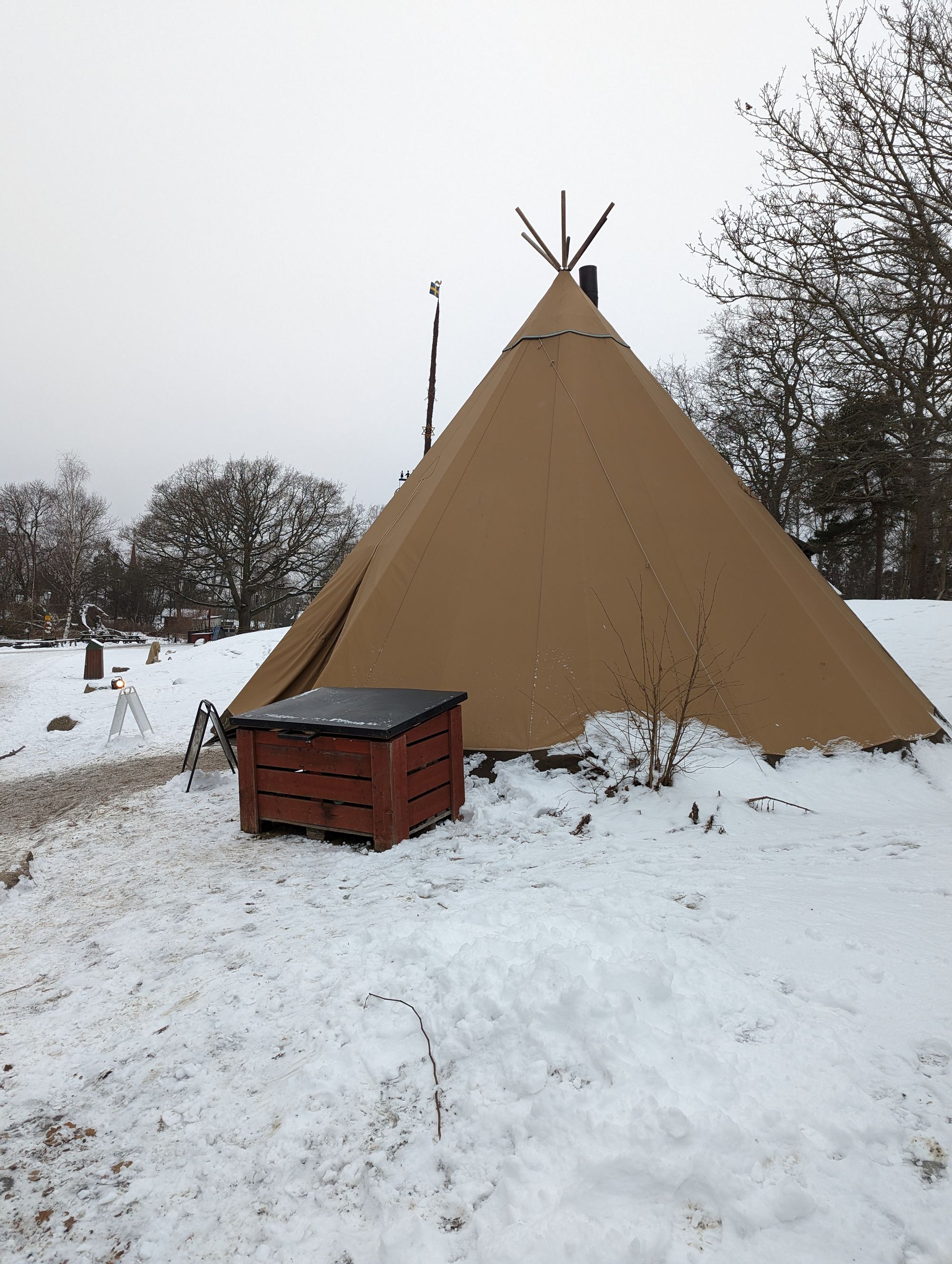
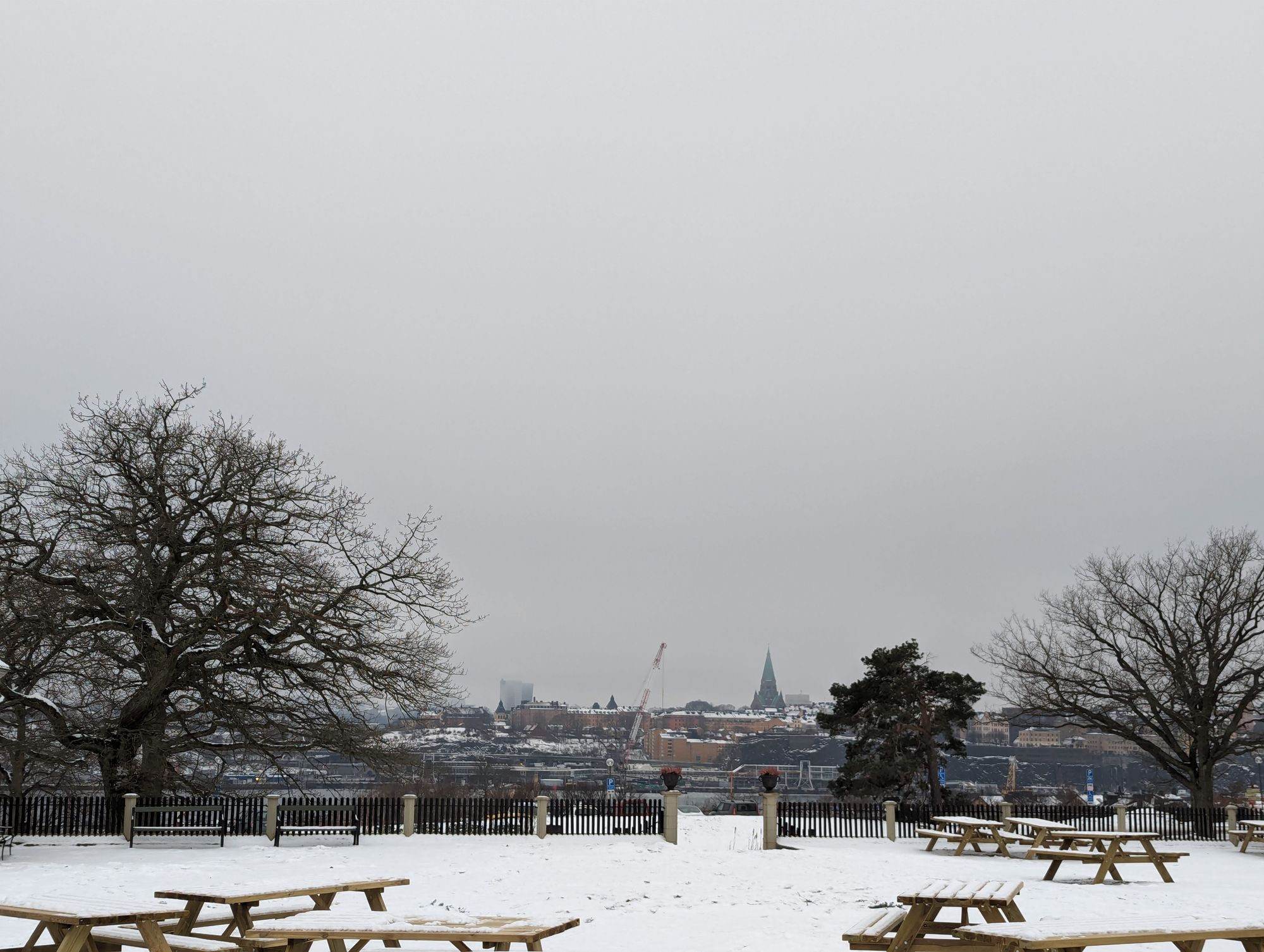
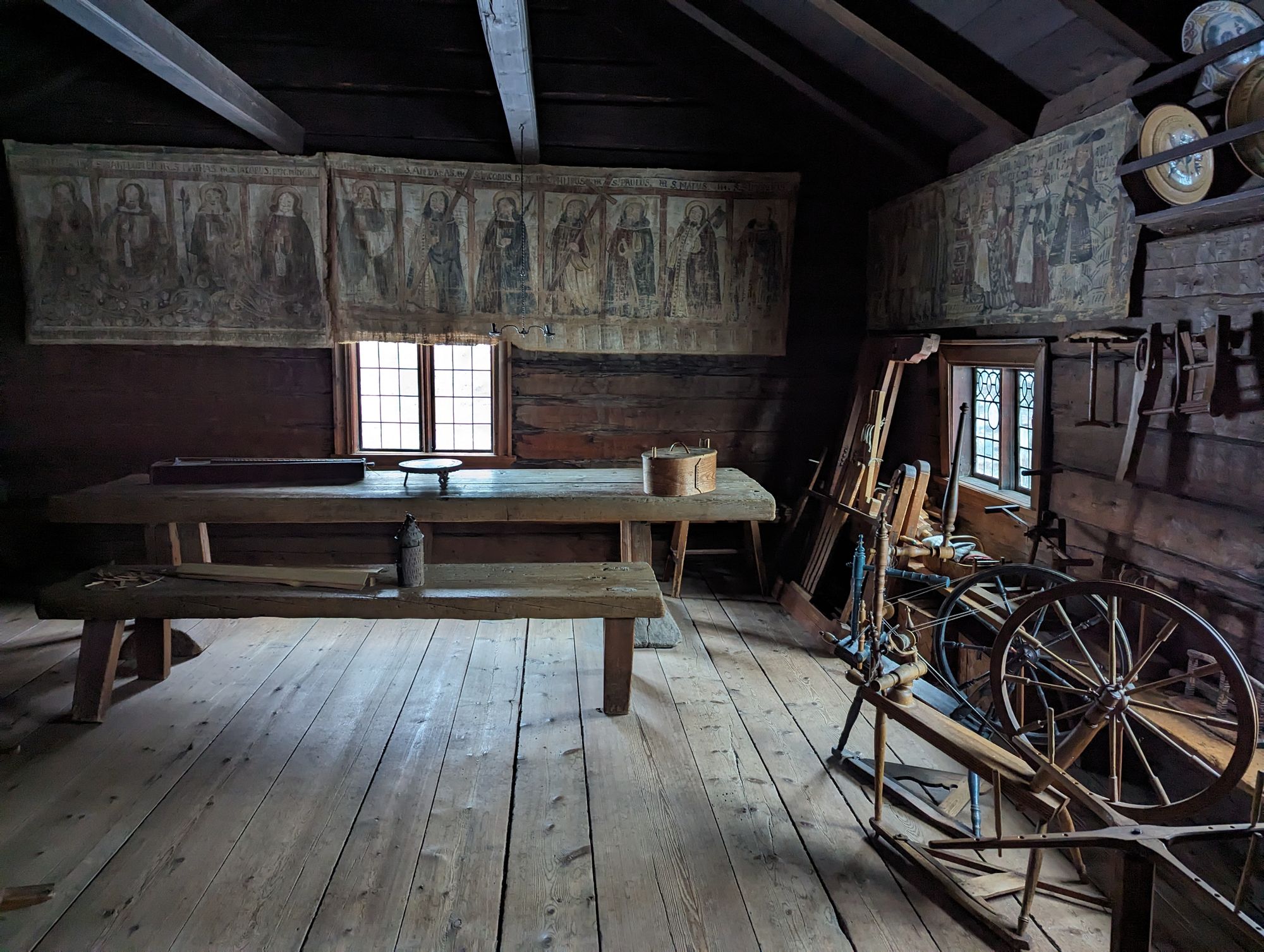
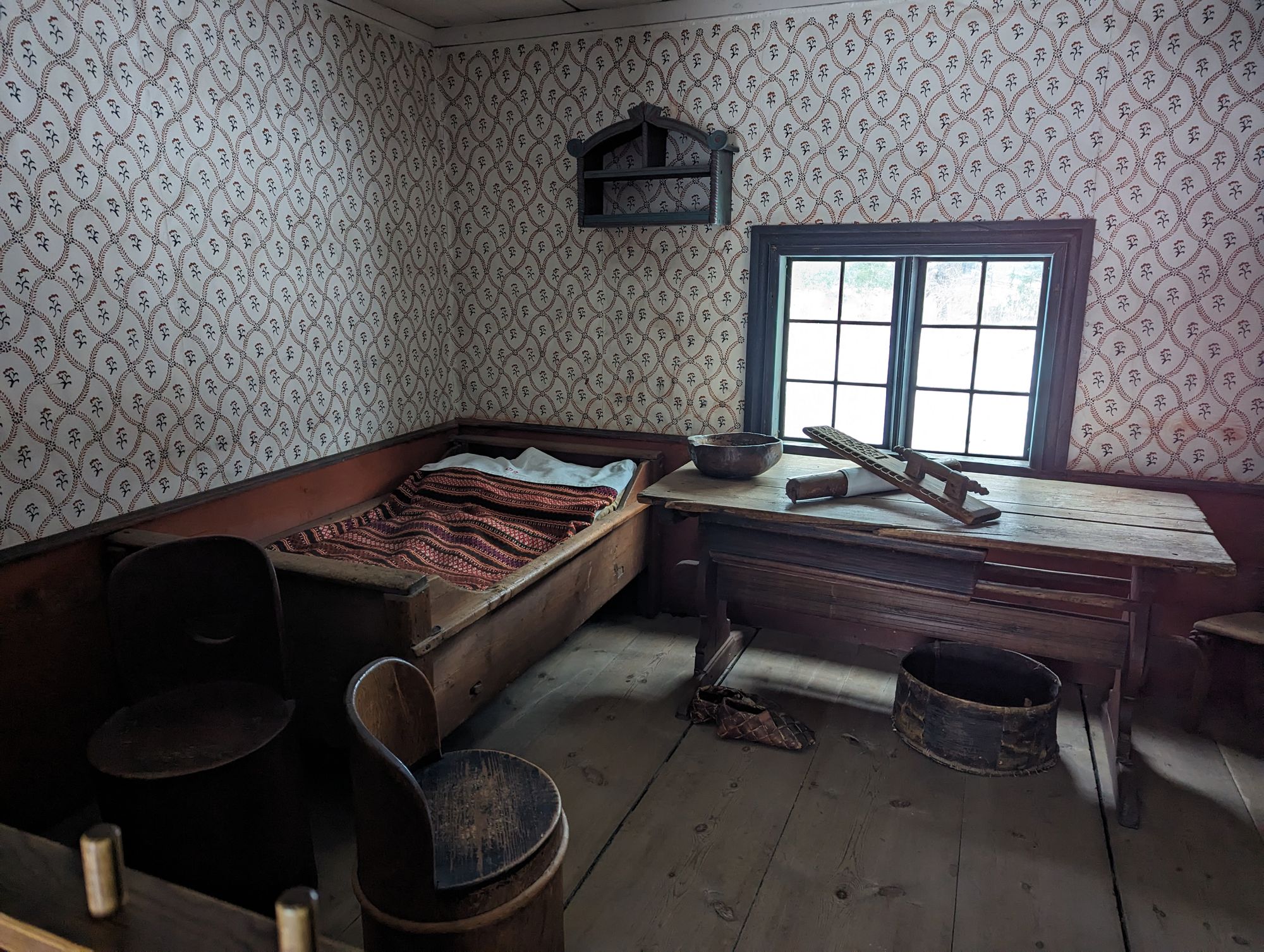
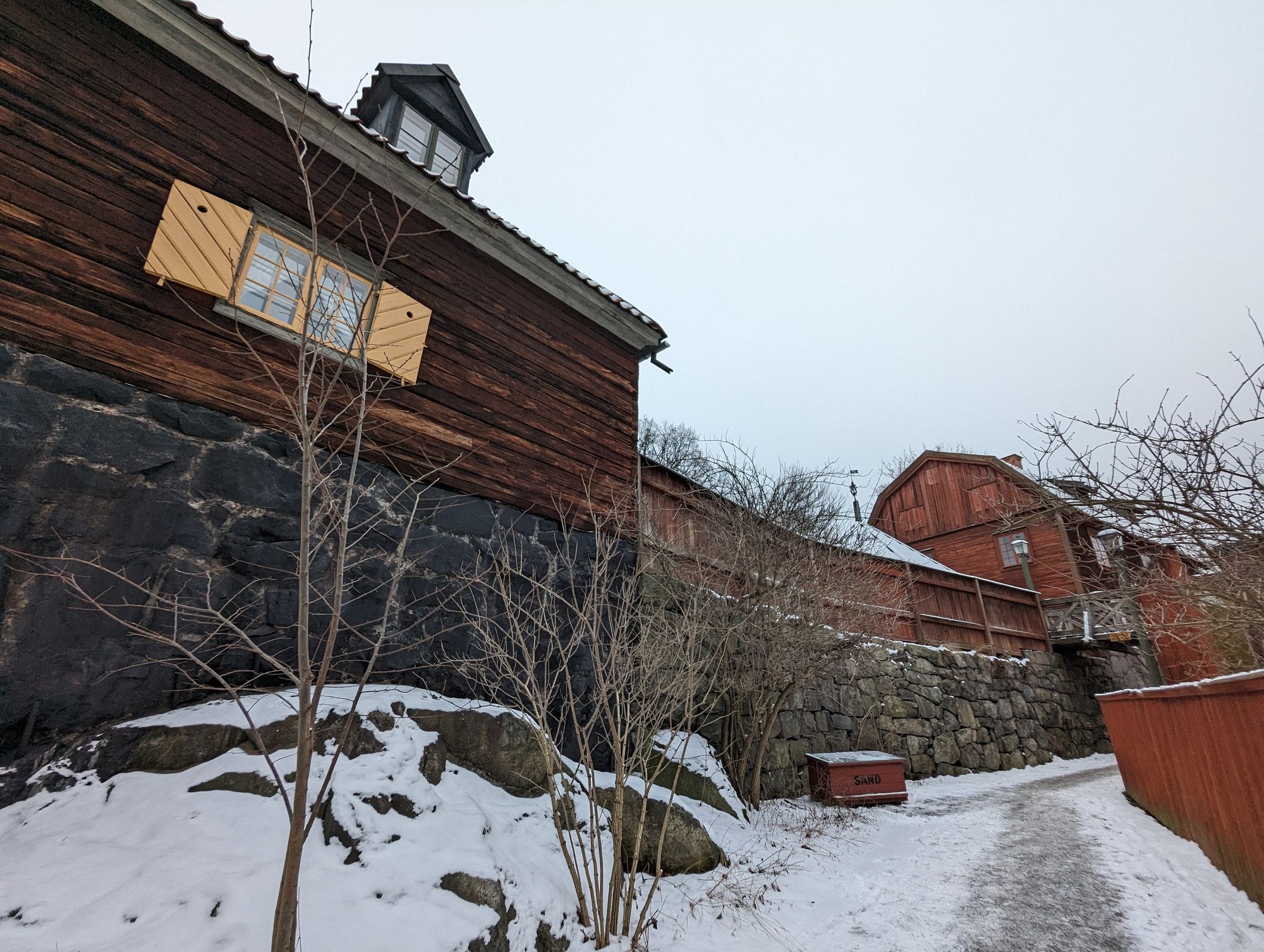
These next 3 are of a windmill without its sails Not sure what they ground up, though.
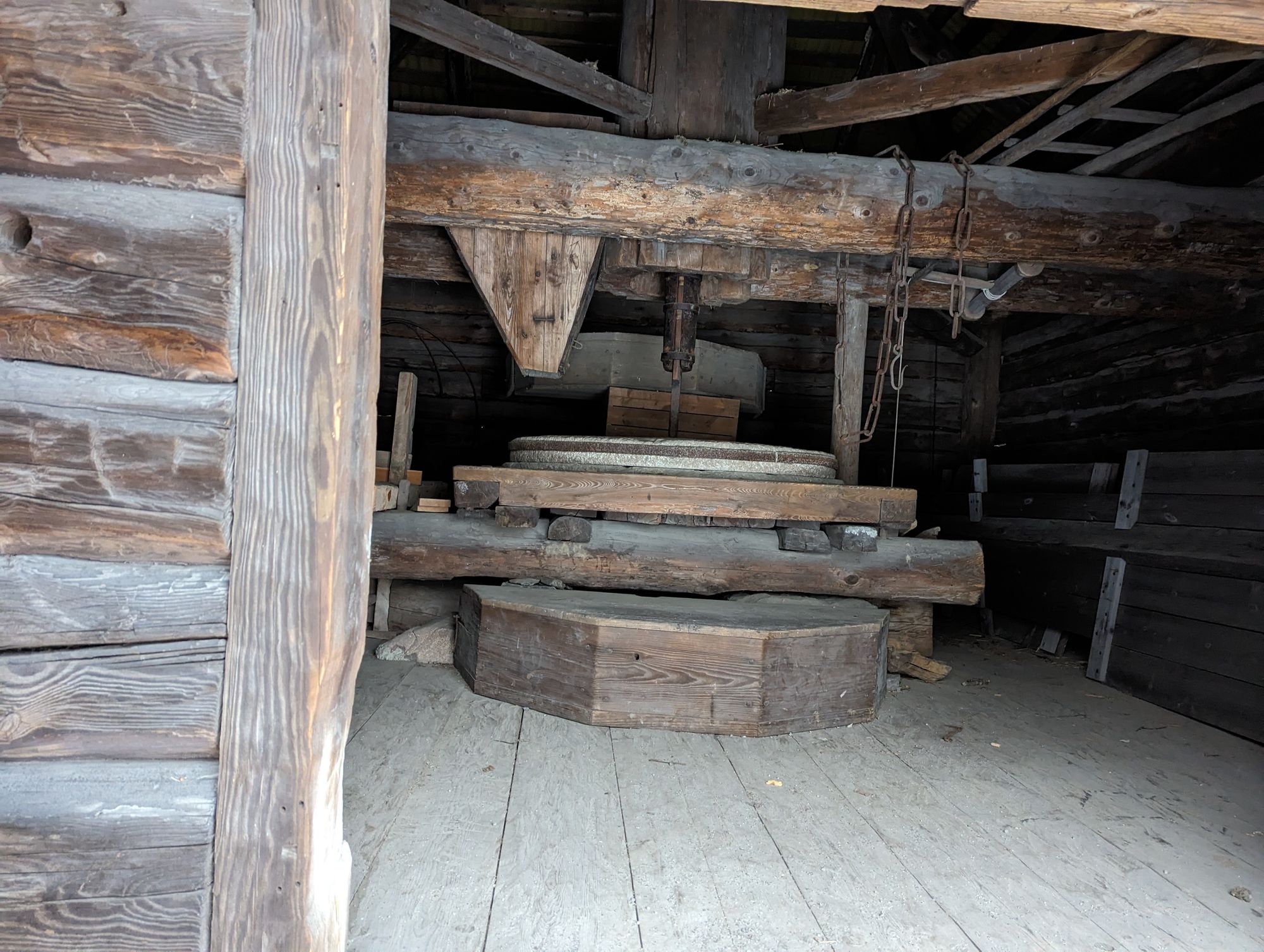
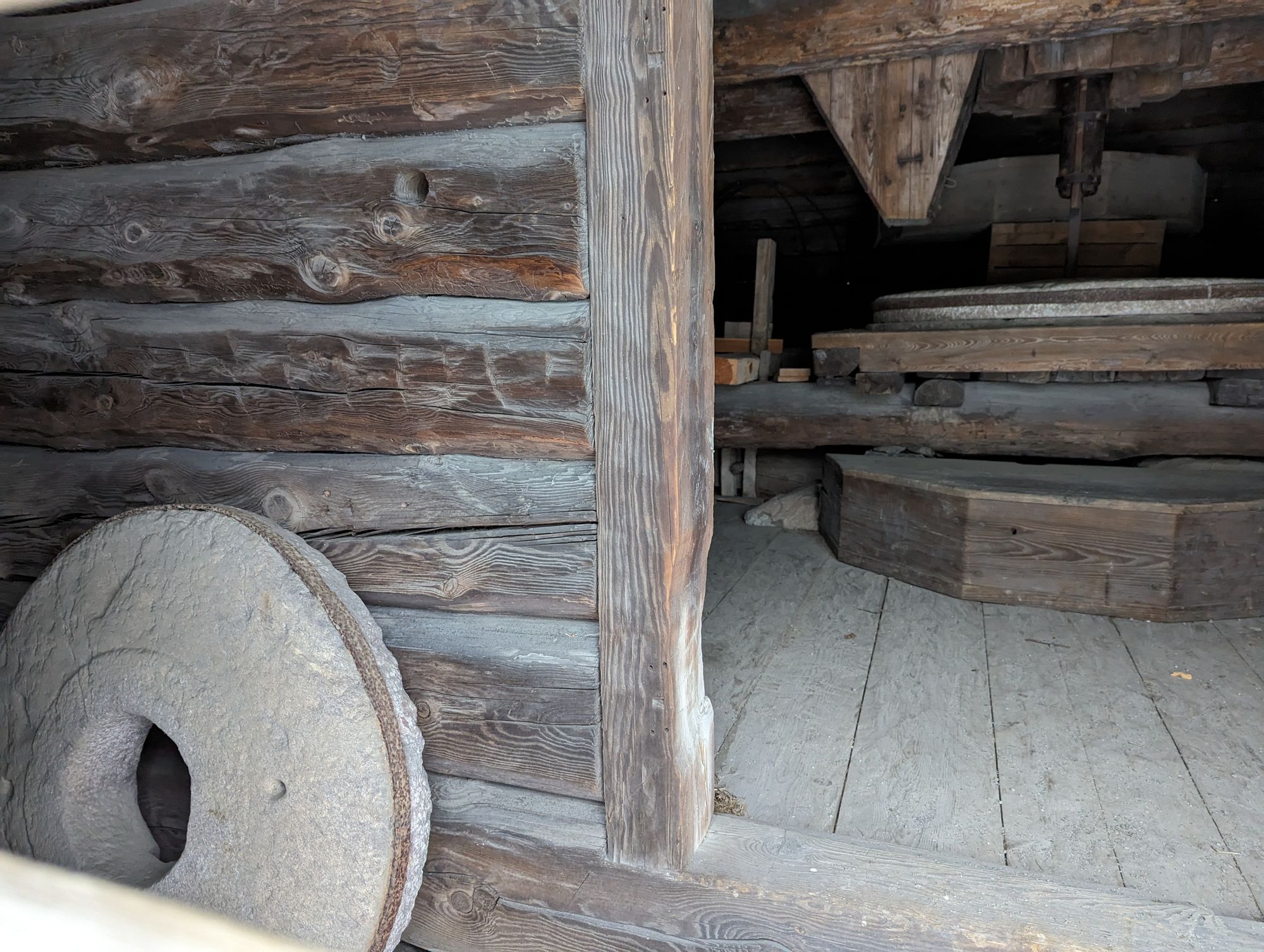
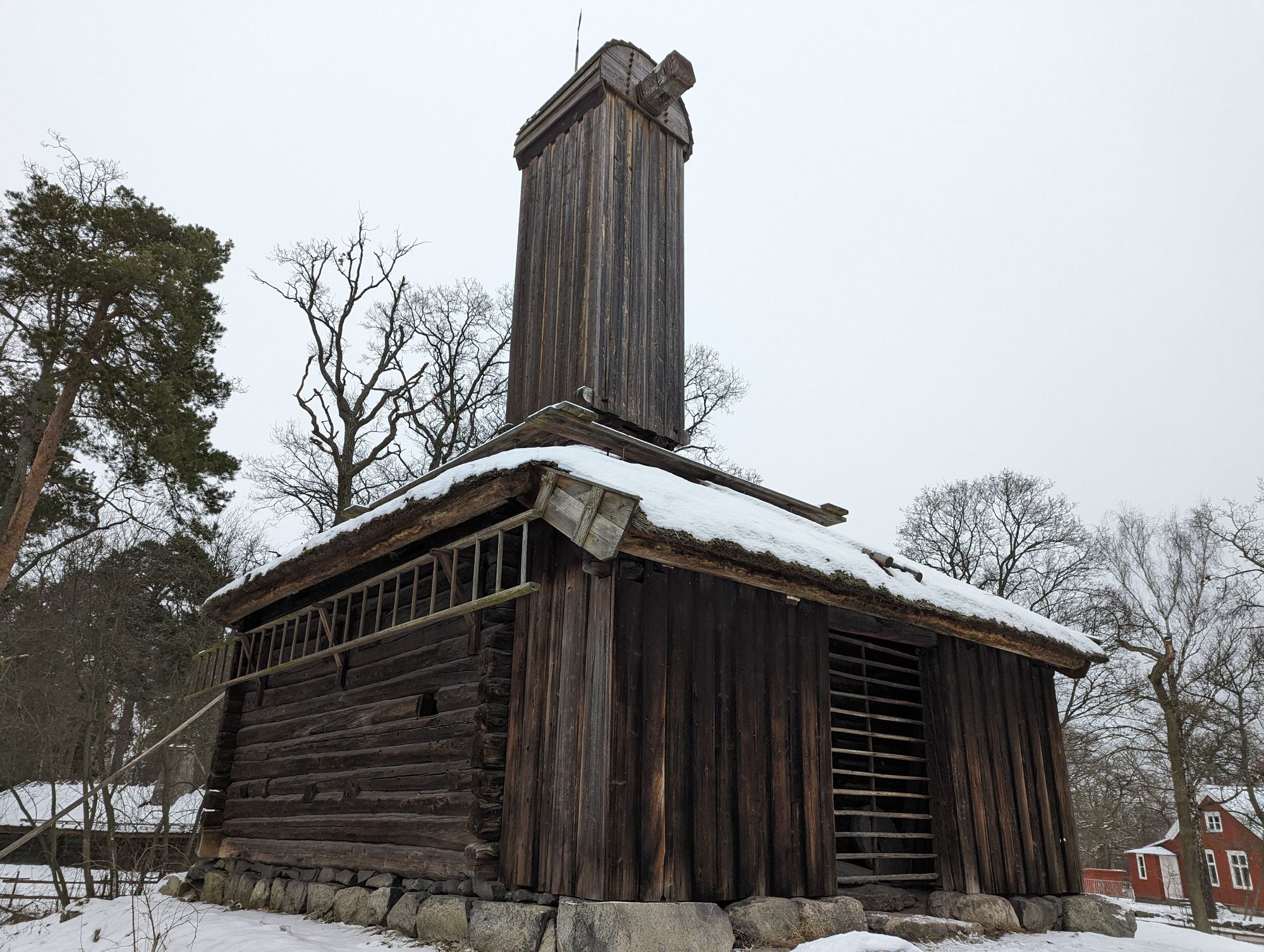
And, last, but not least, the absolute gem of a building, and the single most reason why I bought the tickets to this place: the Seglora Church. It is now only used for weddings.
Catholicism was the first Christian religion introduced to the Vikings (way before the first Protestants of Martin Luther split off in 1517), but at some point Lutheran became the prominent religion. So, if the churches are extremely old (prior to 1517), they're repurposed Catholic-to-Lutheran churches. I believe Segola Church was always Lutheran.
Side note; there are no electric lights inside these buildings. Everything was quite dark (on a cloudy winter morning). Flash photography is not allowed.

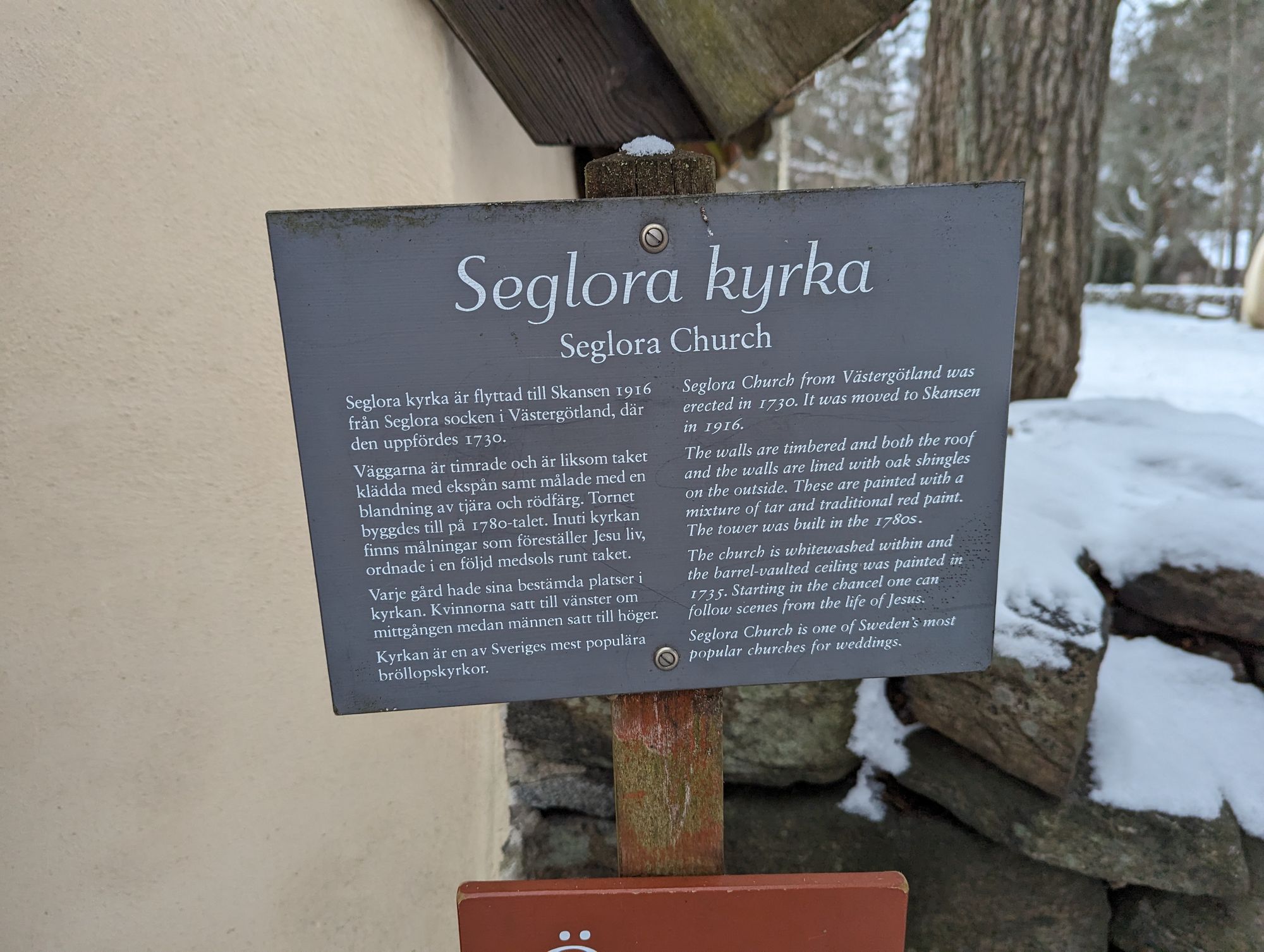
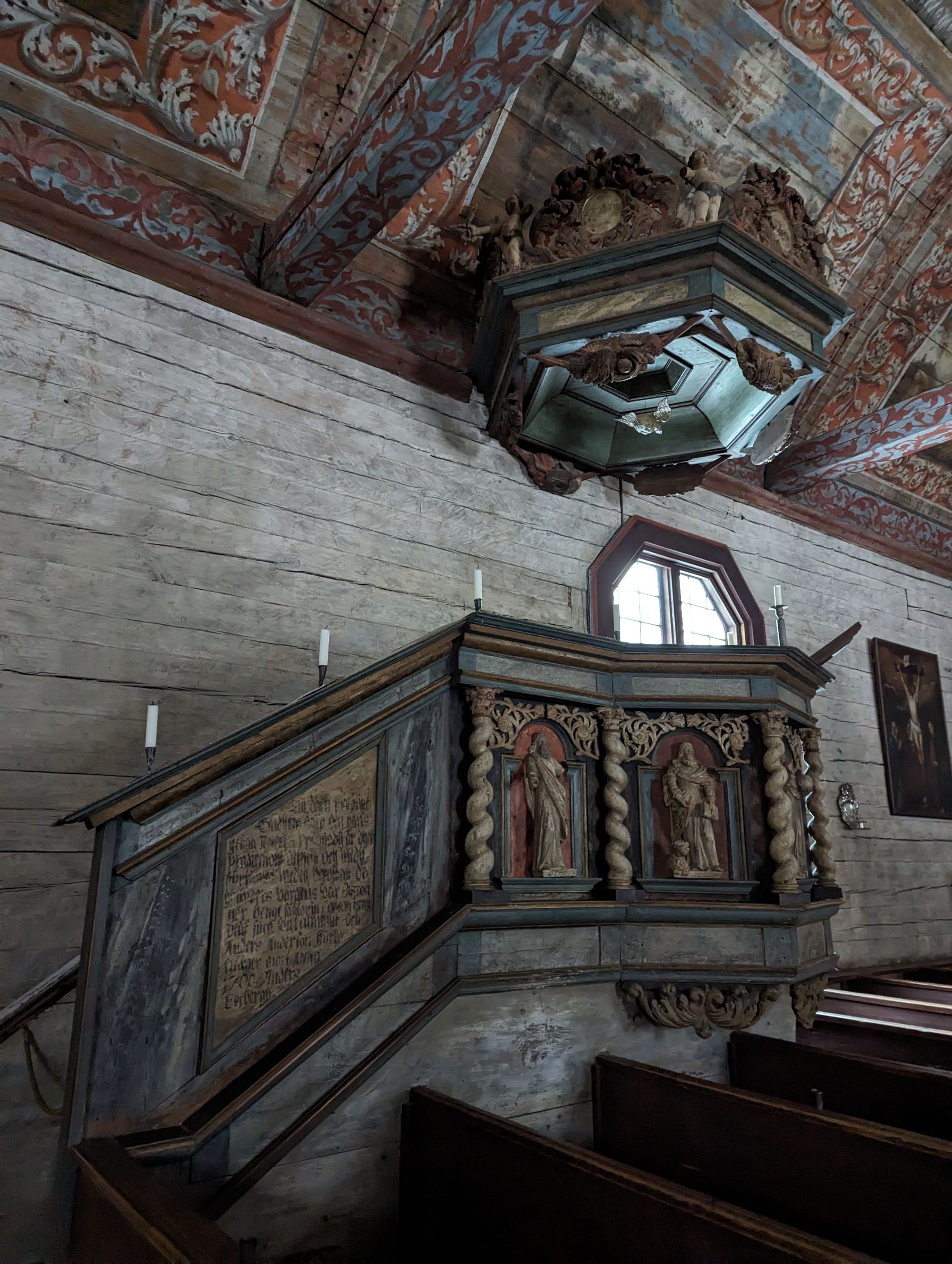
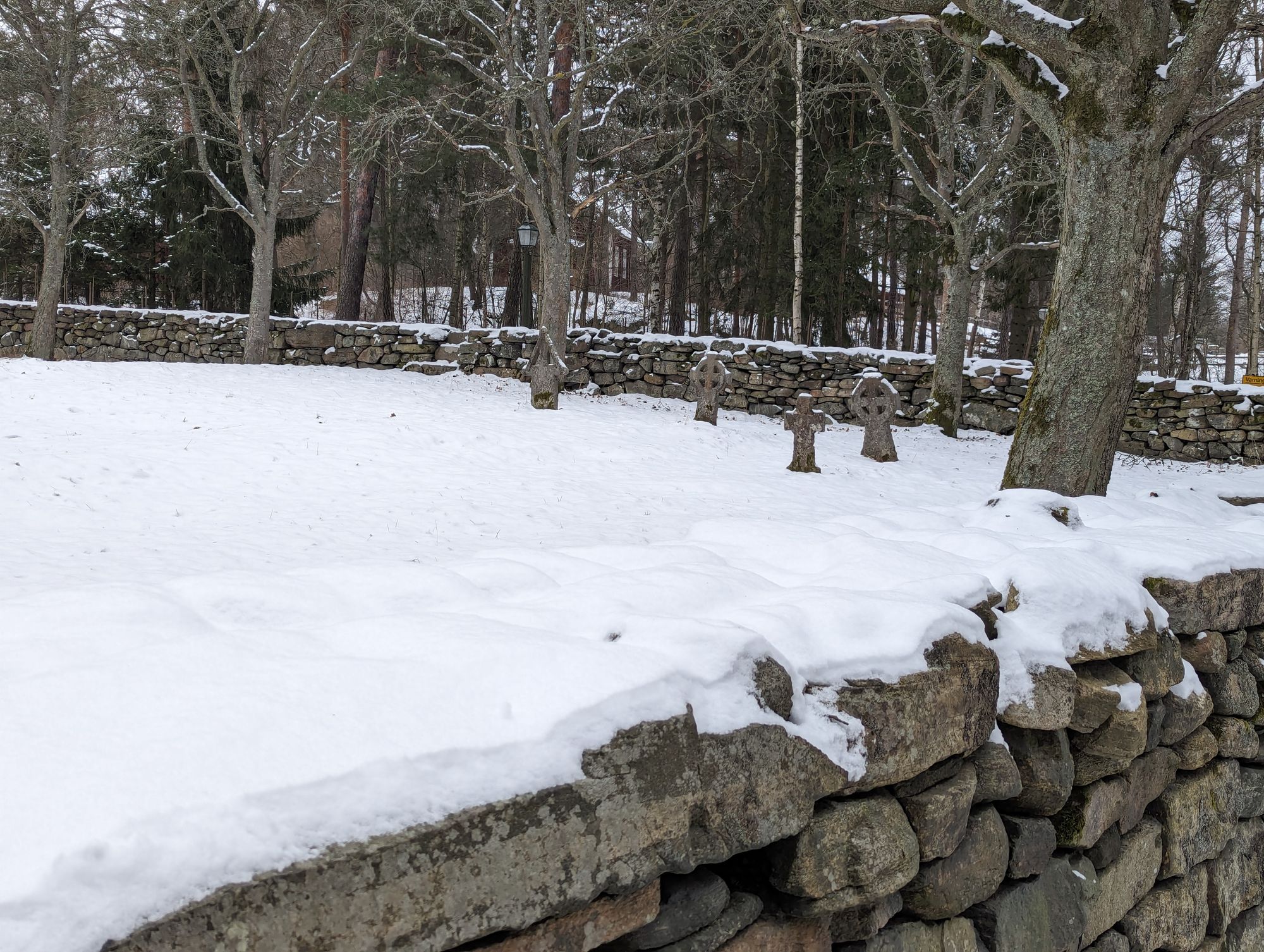
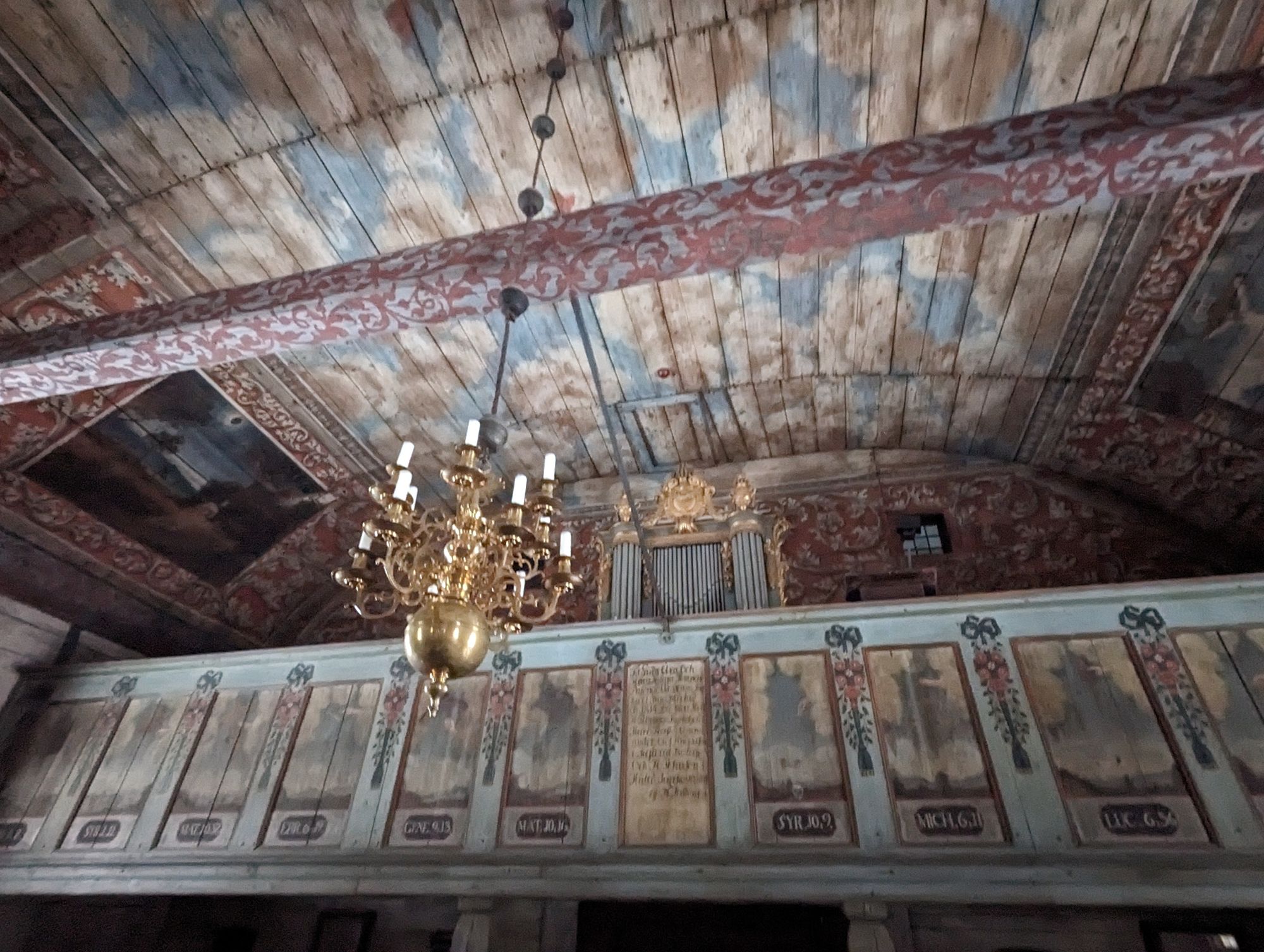
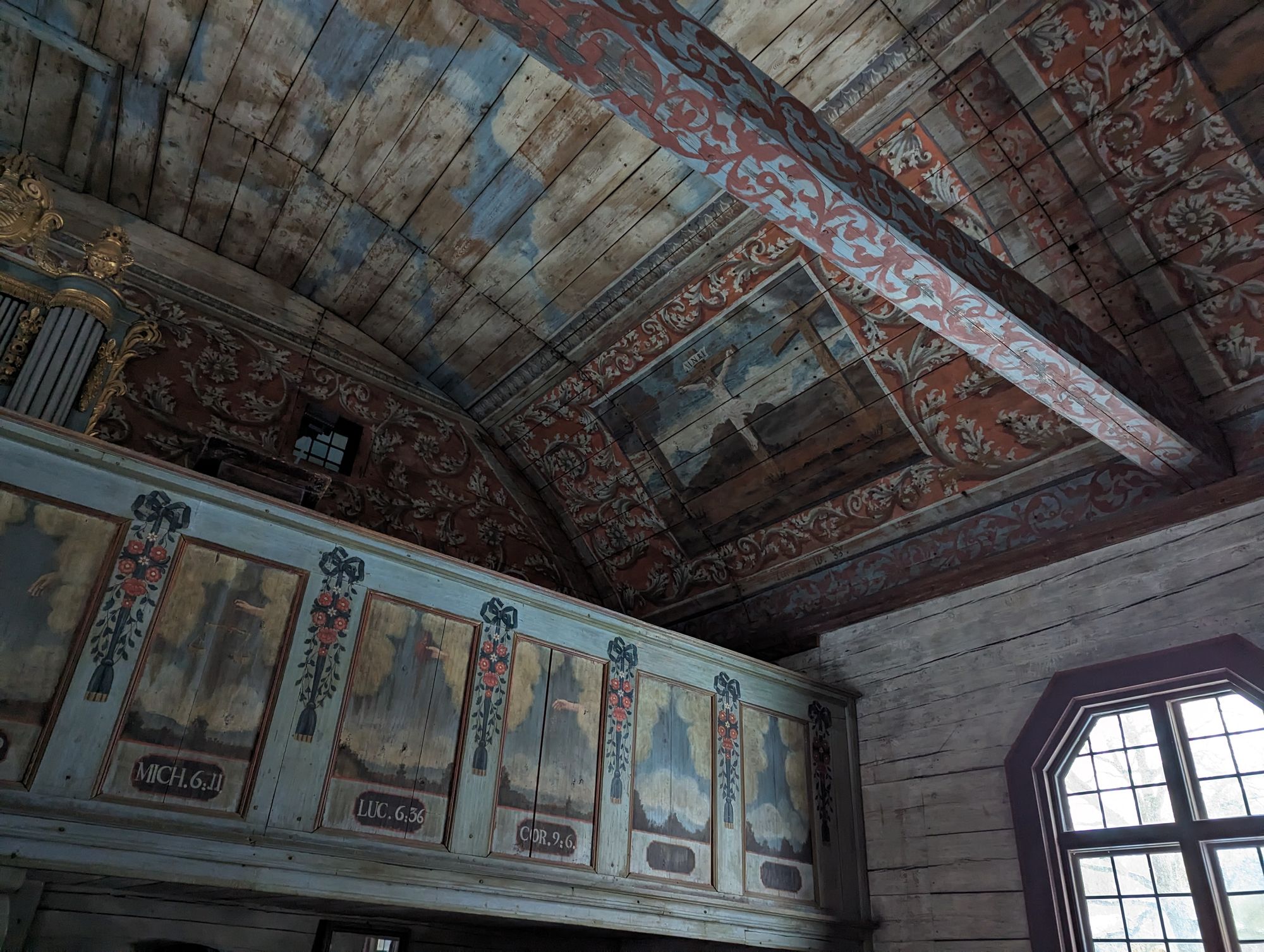
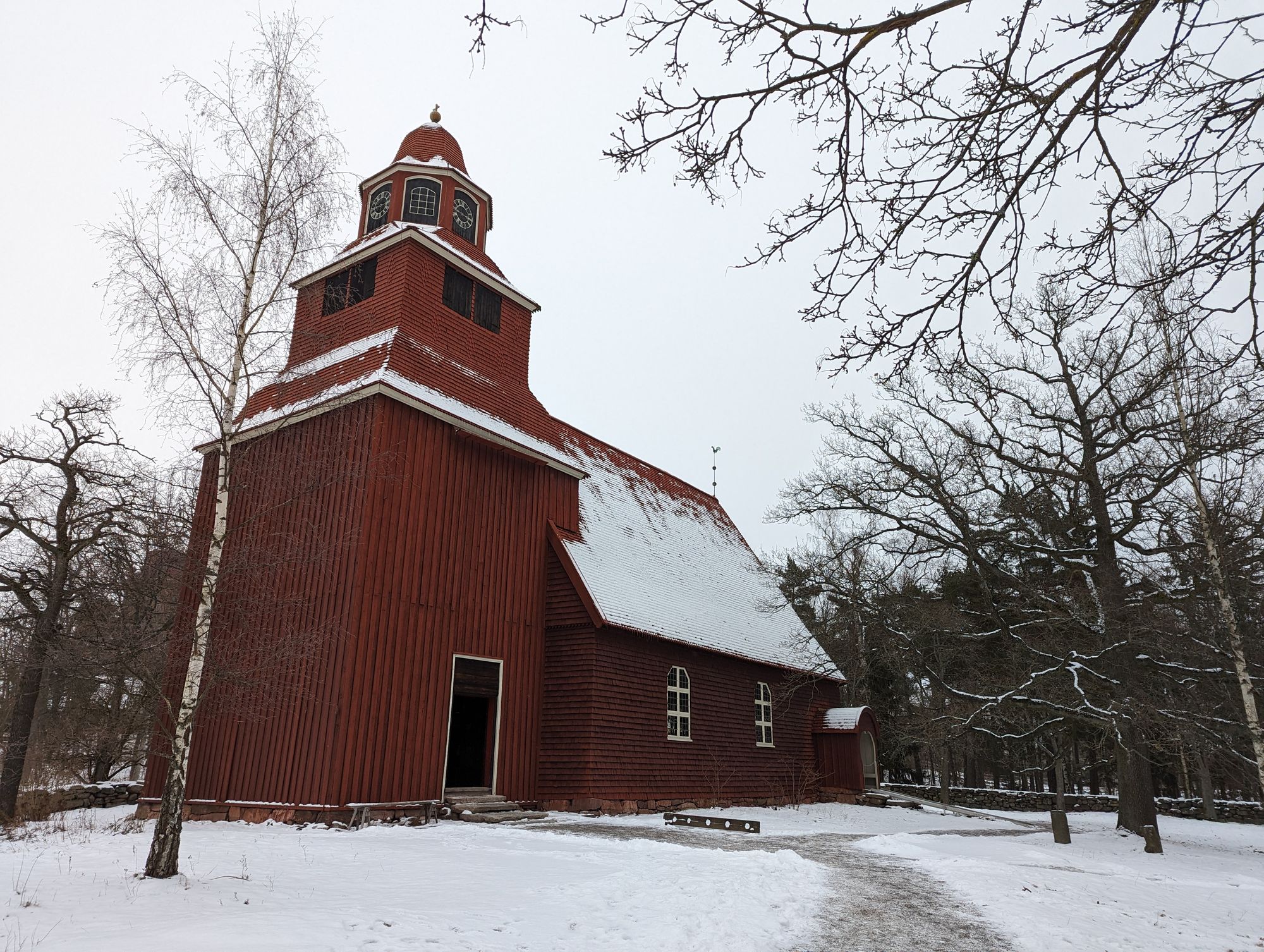
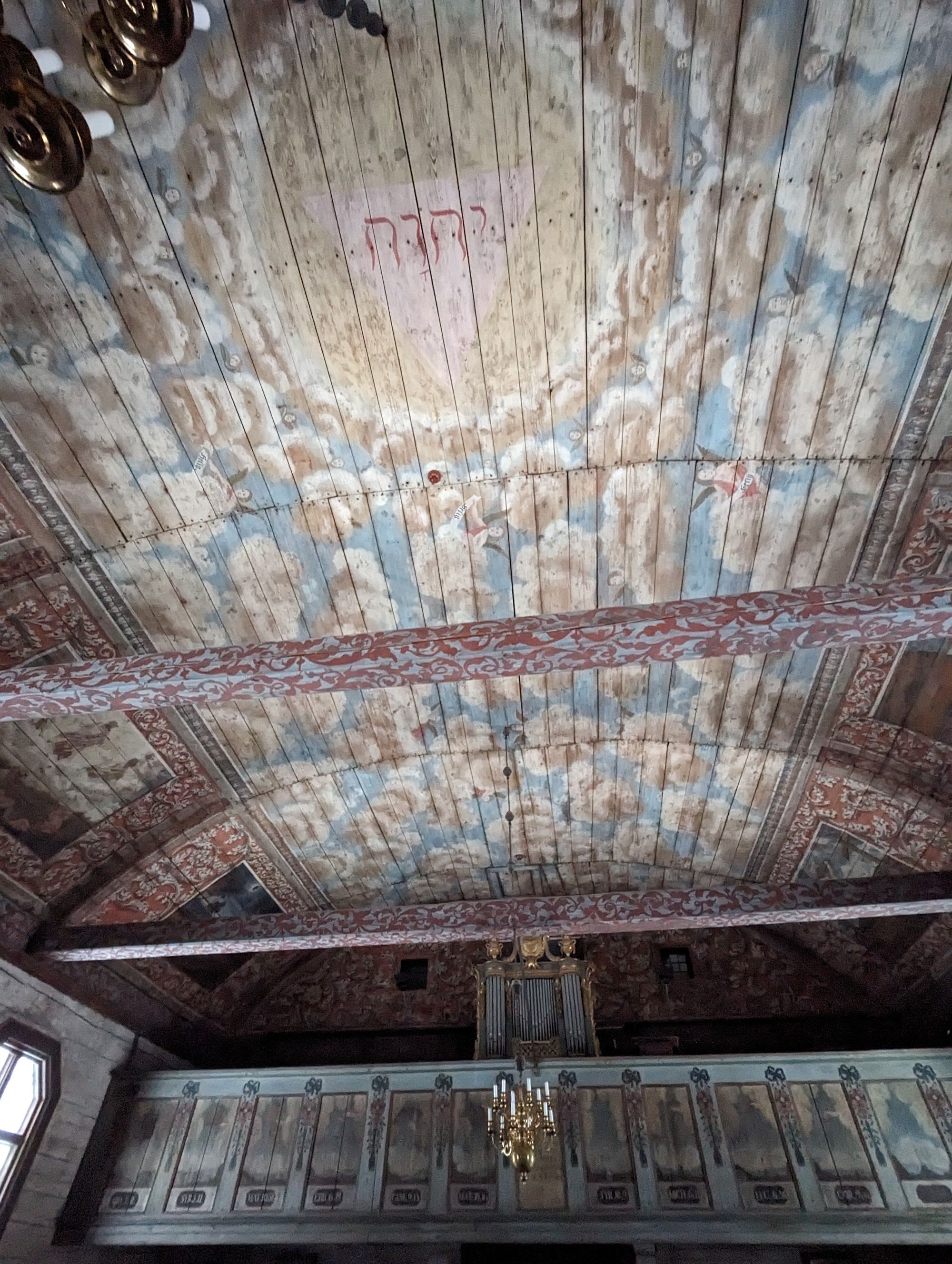
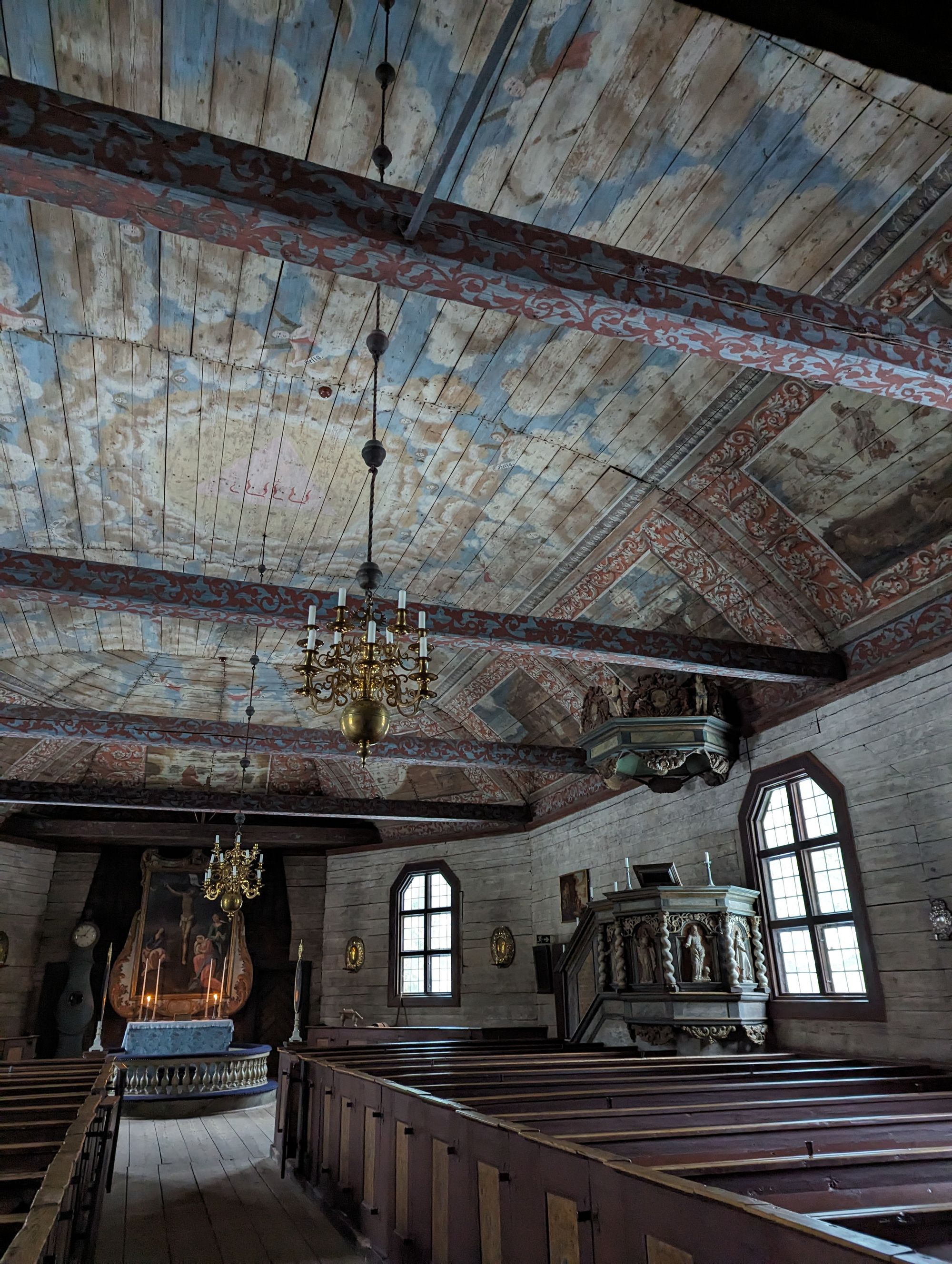
Cold and hungry, we made our way to the on-premises restaurant that had the best gluten free options, and ate lunch! We had been walking around for 3 hours, already, in 28 degrees Fahrenheit with tiny snowflakes taking at times. I had the pork leg with potatoes. It was yummy! But, be warned: they put a huge dollop of mustard on the dish! I'm talking at least 2 tablespoons. It was a good mustard, but I only needed 1/4 a tablespoon. The lighting was so dim, I couldn't tell what it was, and got a huge vinegary surprise!
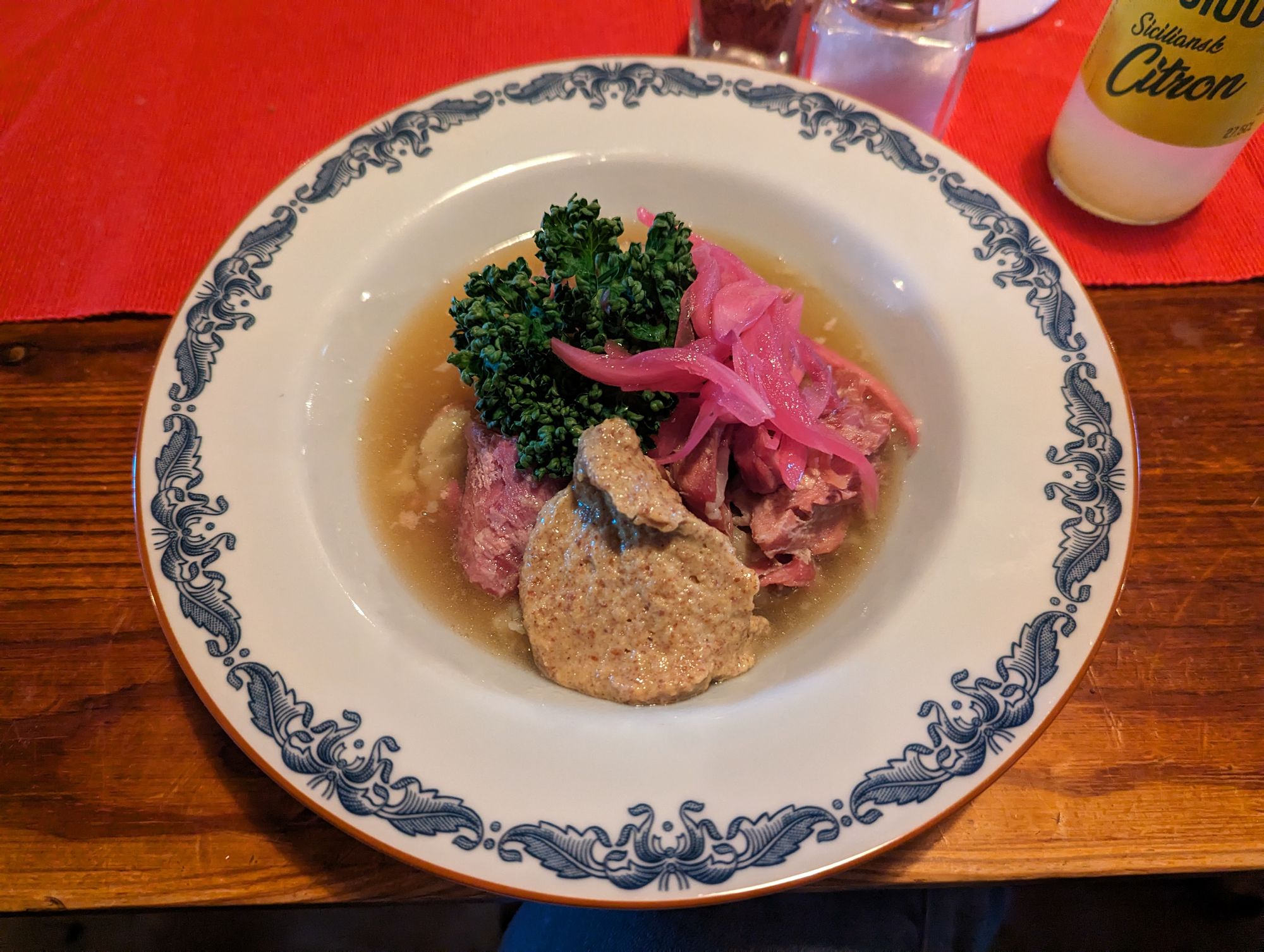
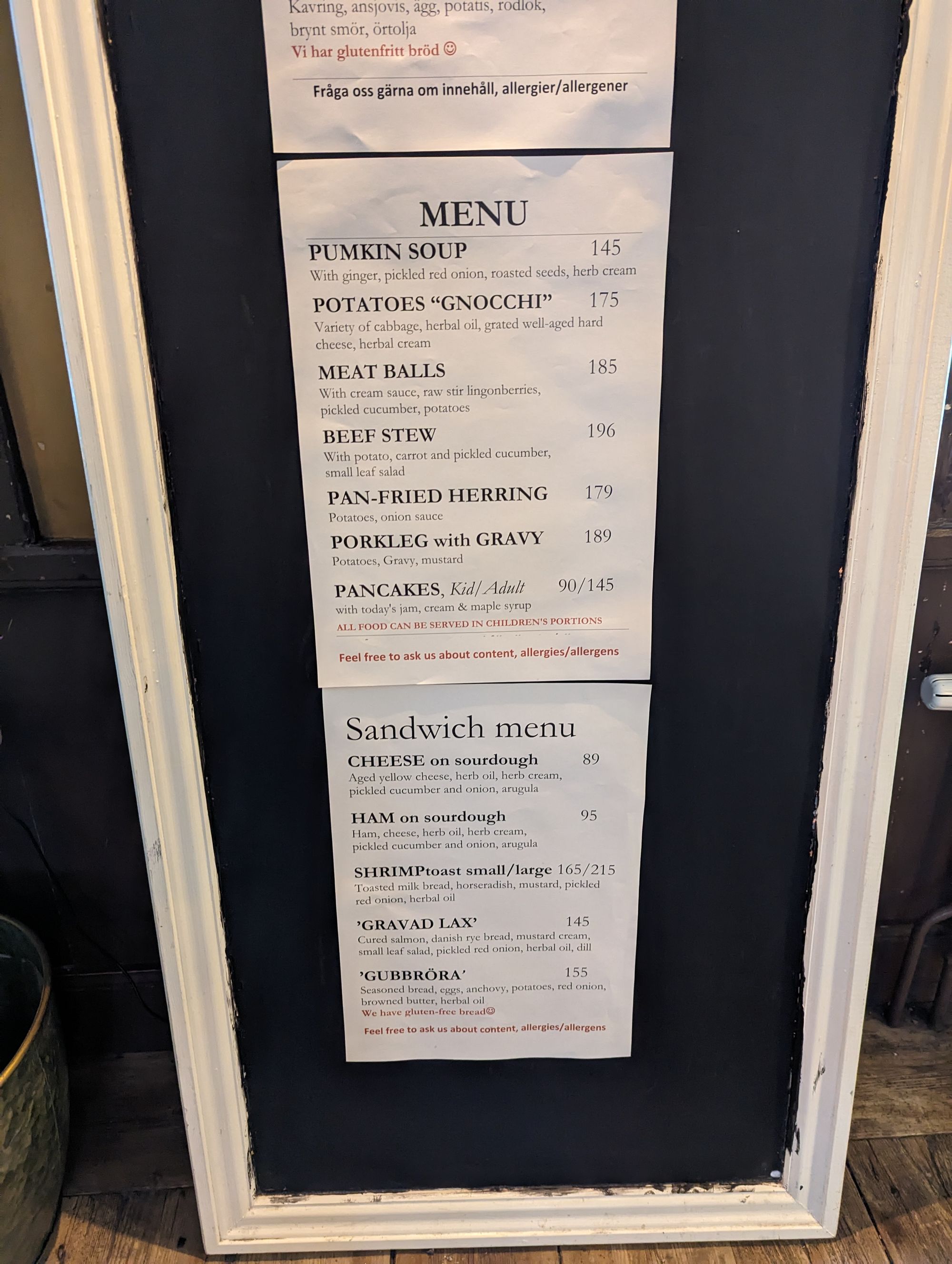
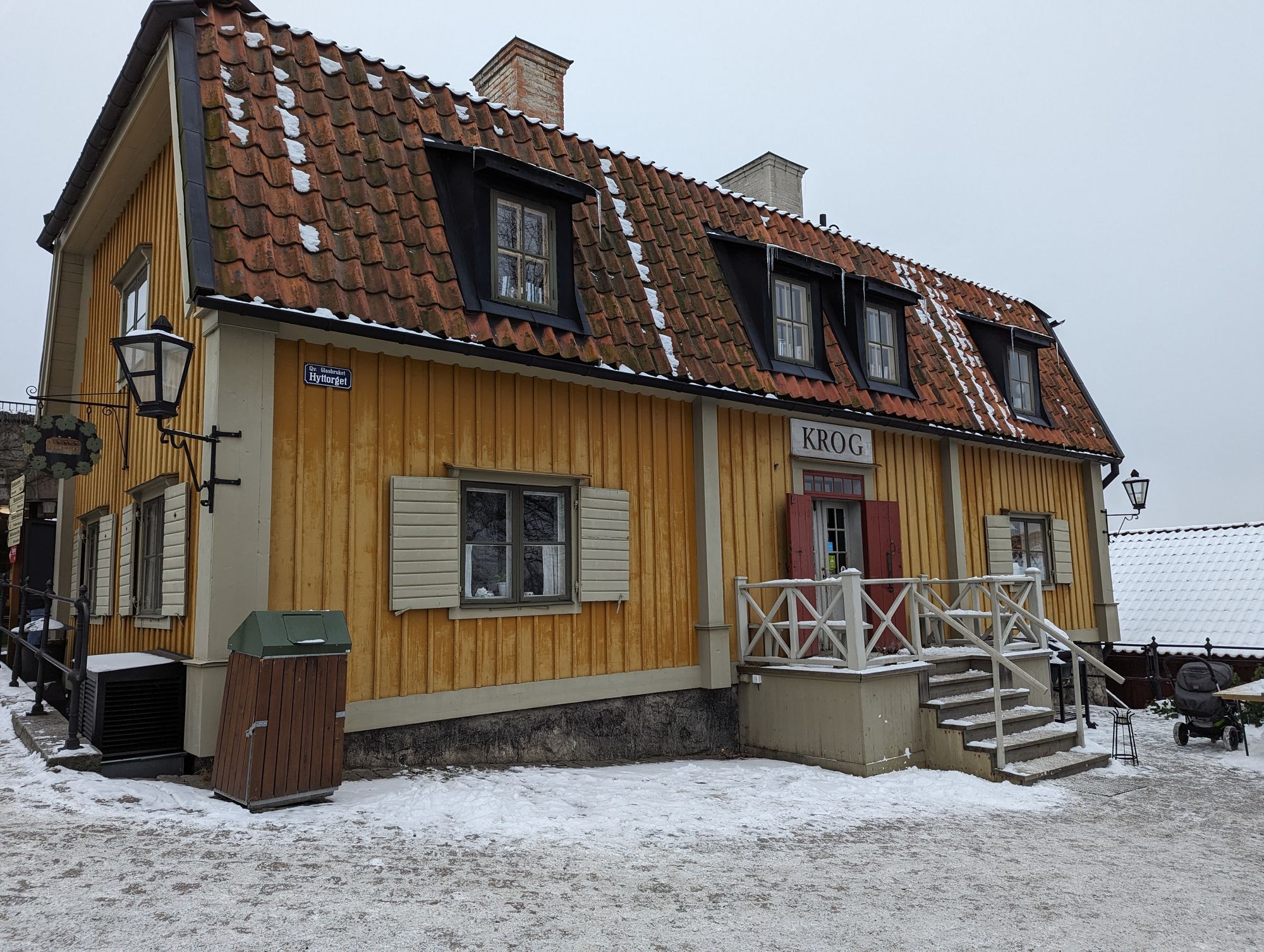
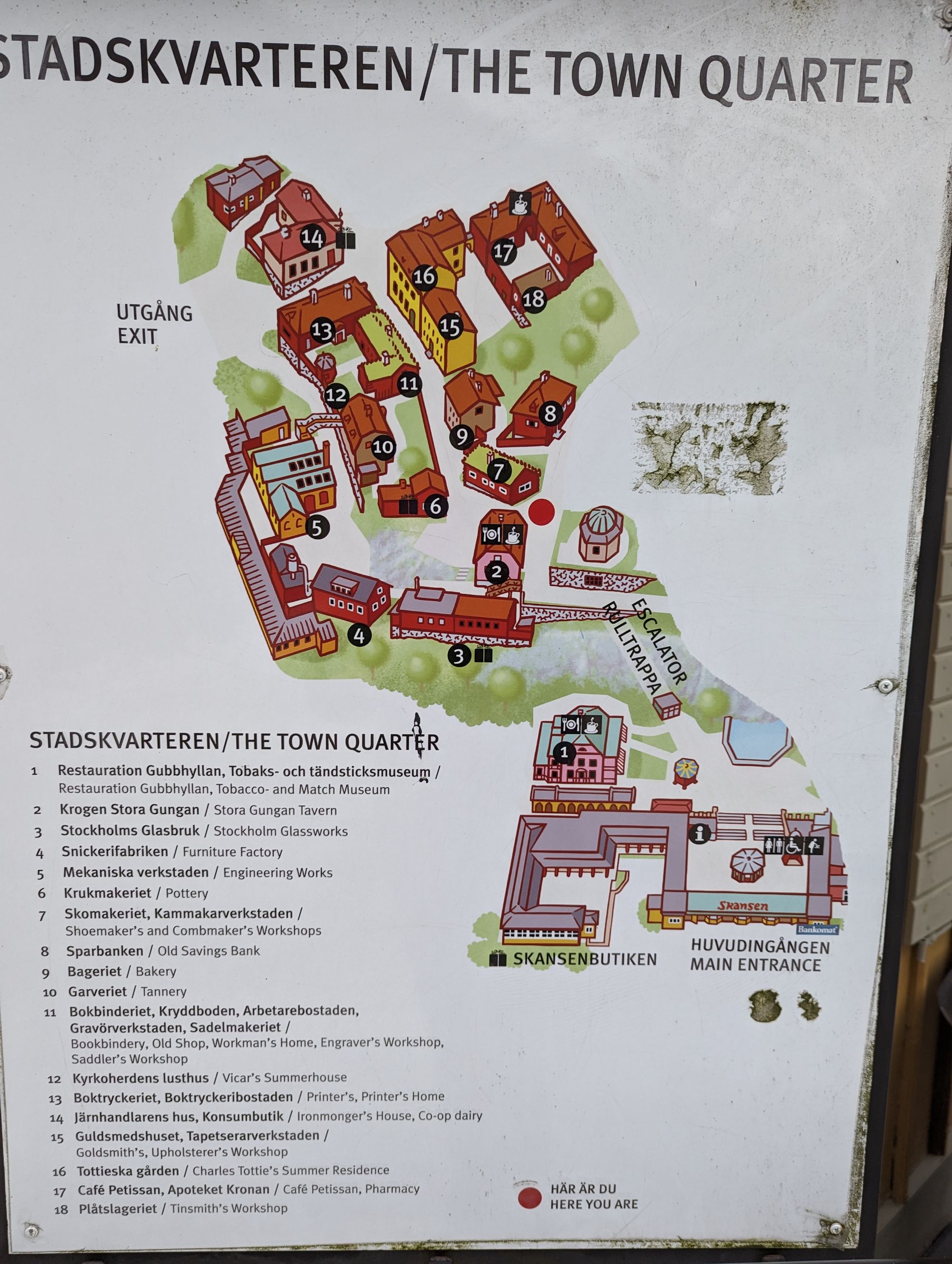
From there, we walked around the area to see the other shops/craftsmen. I got to see glass being blown!!! Well. The guy was doing sculpture work, so he wasn't actually blowing it at the time. Regardless, it was really neat to watch, in person, a thing I've seen many times on the Max show, "Blown Away."
Also there, a pottery shop, engineering workshop (with huge machines inside), furniture shop, and leatherworker. They say they had an ironsmith, but the shop only had cookie cutters and gardening tools in it. I couldn't find the actual smithy.
Lastly, before hitting the Skansen gift shops, we walked around the Baltic Sea exhibit. I learned about the fish in the area. (Skansen even had a petting zoo and aquarium! I just had no interest in these.)
The Baltic Sea is so cold and deep (anaerobic environment) that any discovered ship wrecks are often in pristine condition for their age. Stay tuned for Wednesdays adventures for more on this topic!
With that, we closed our first full day in Sweden! Took public transportation back to our hotel, and got back just around sunset (4:30pm). Too tired and cold to go out, again, we found a GF pizza Uber Eats delivery. It was cheaper than the hotel restaurant!
Good night!
